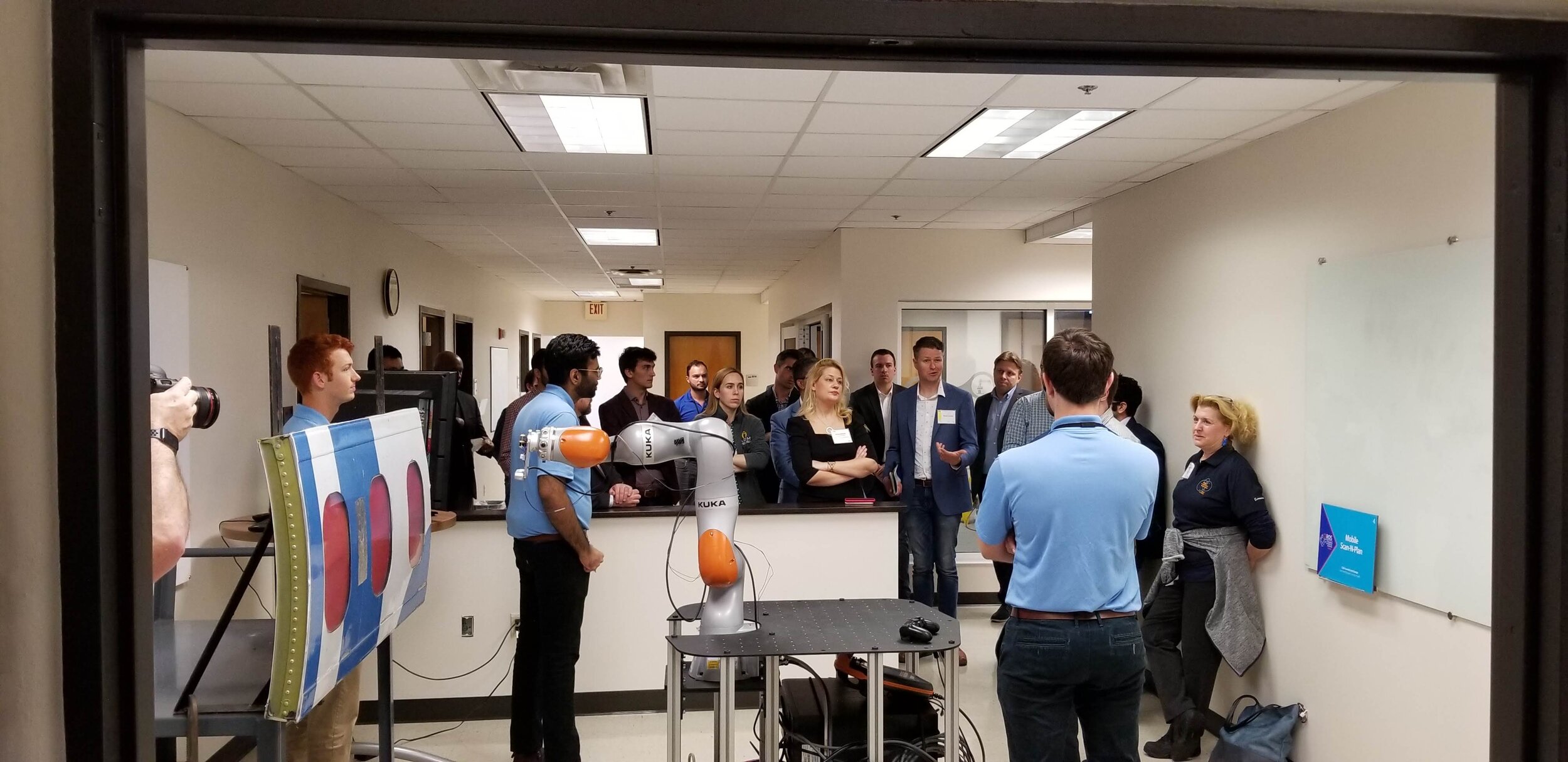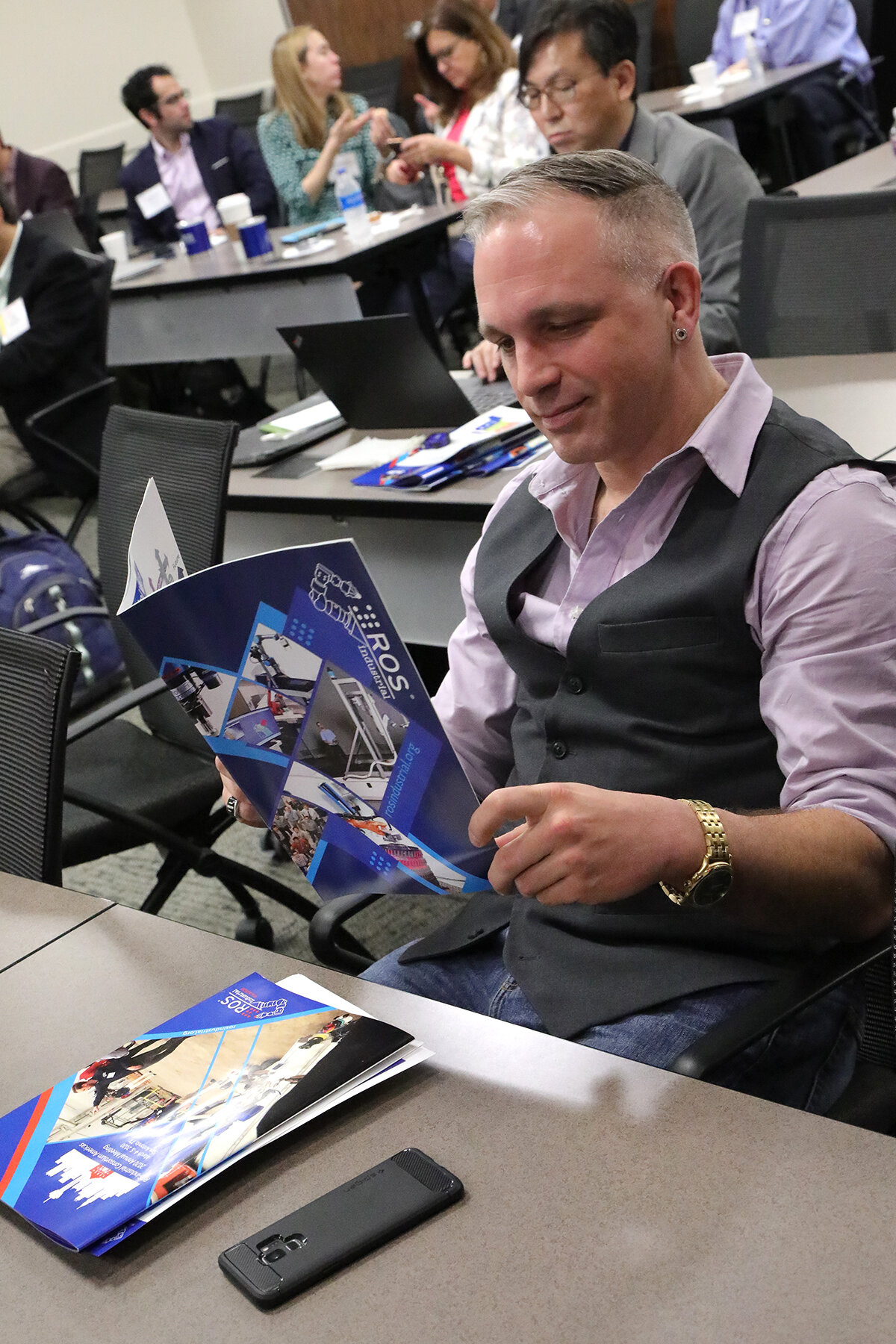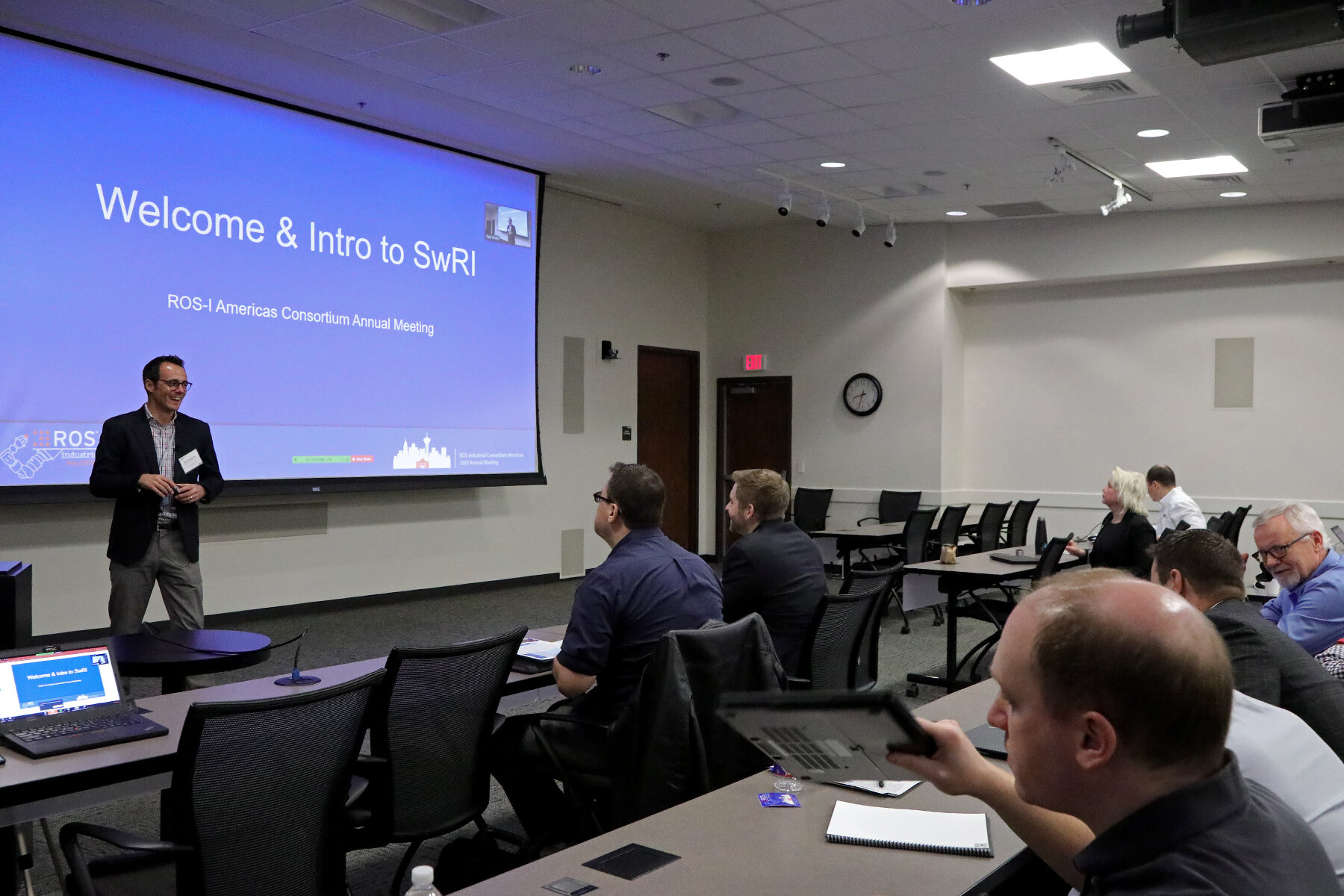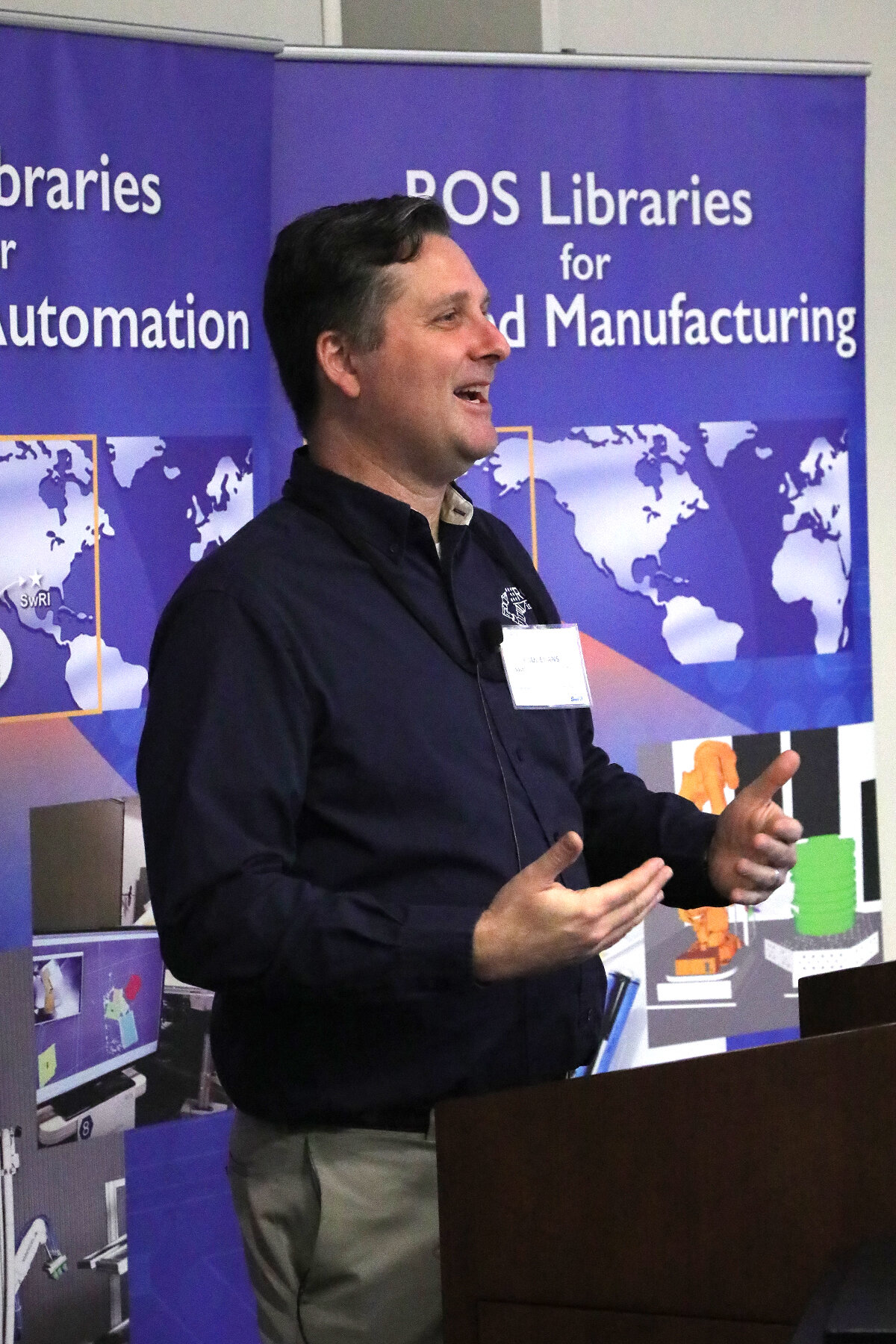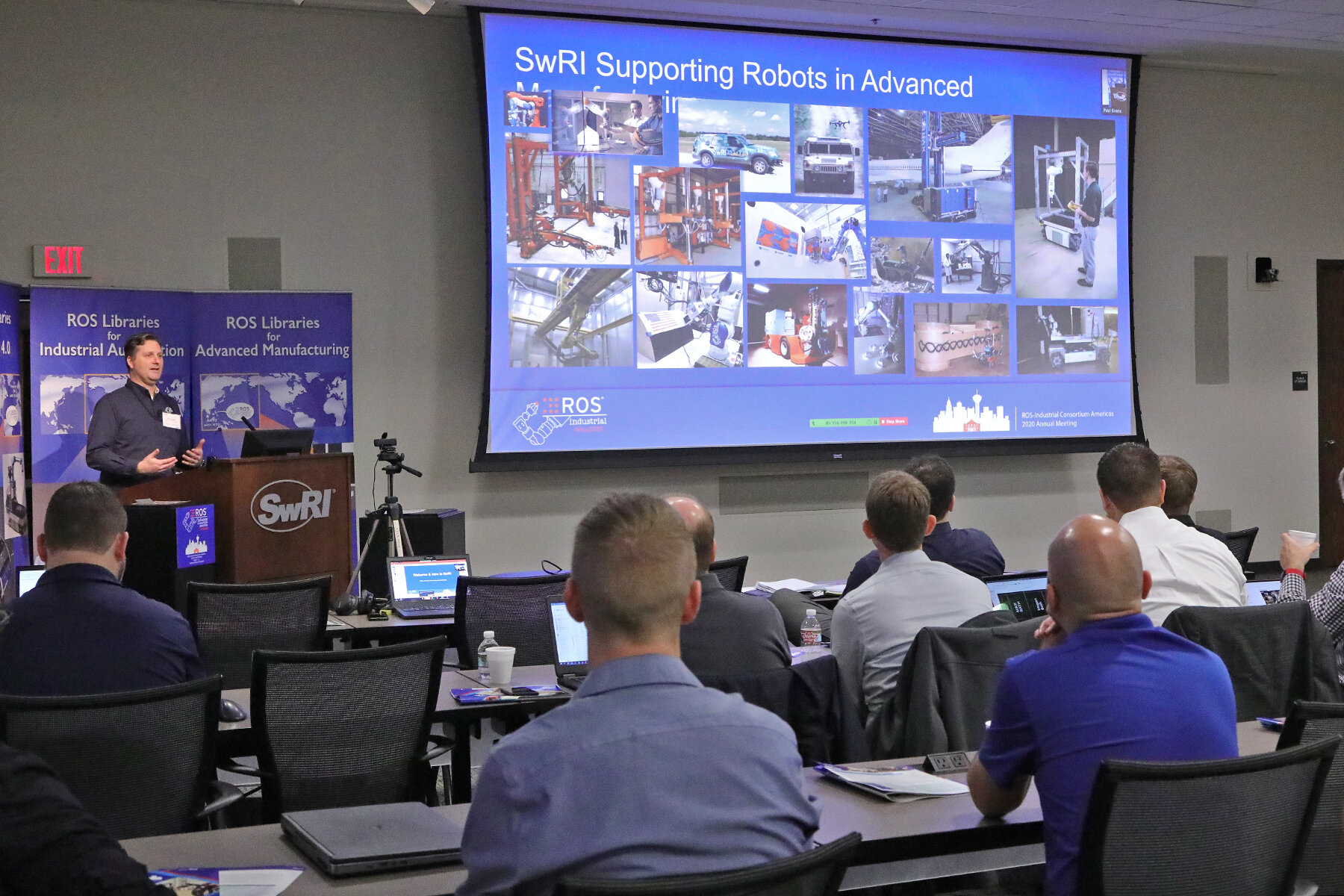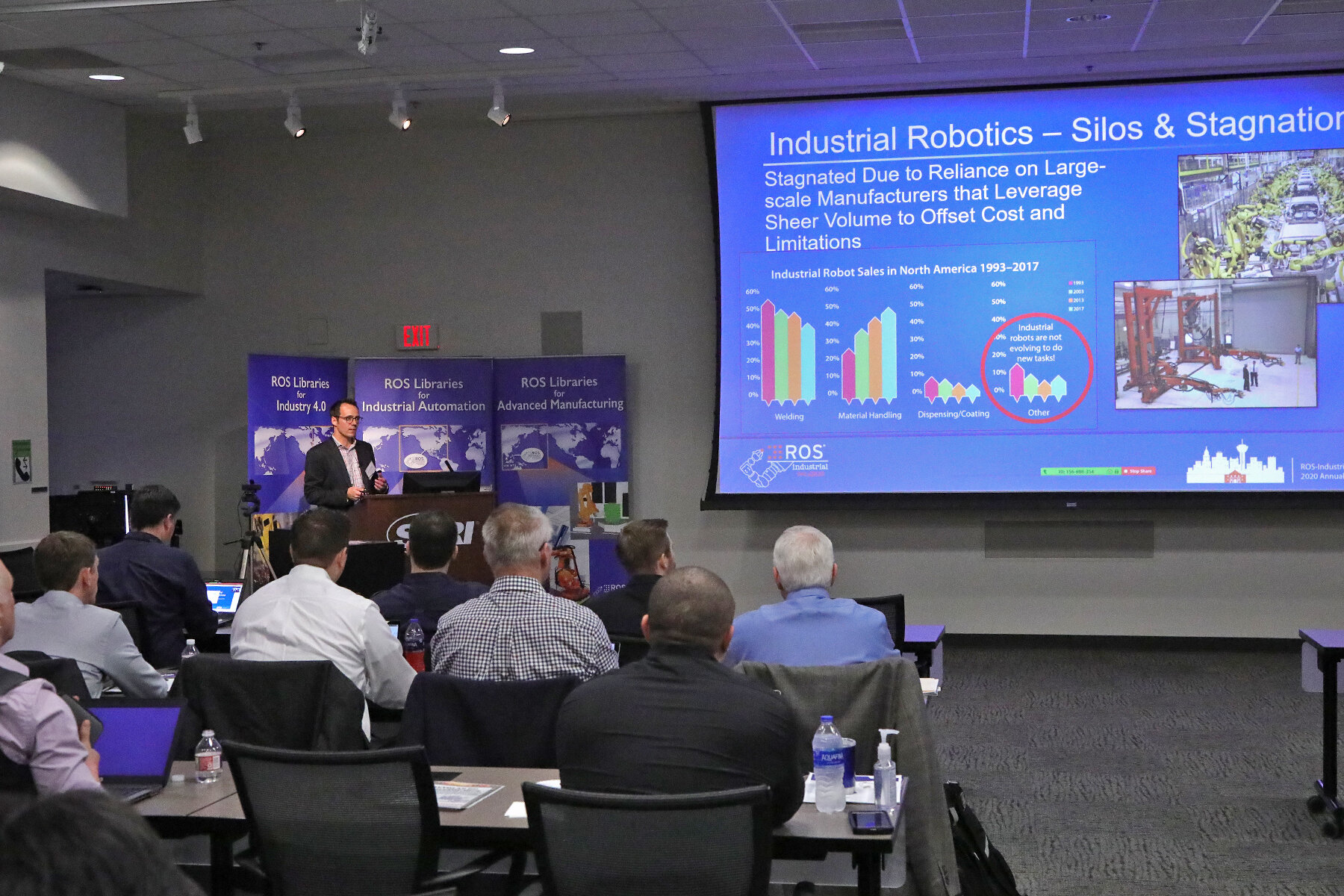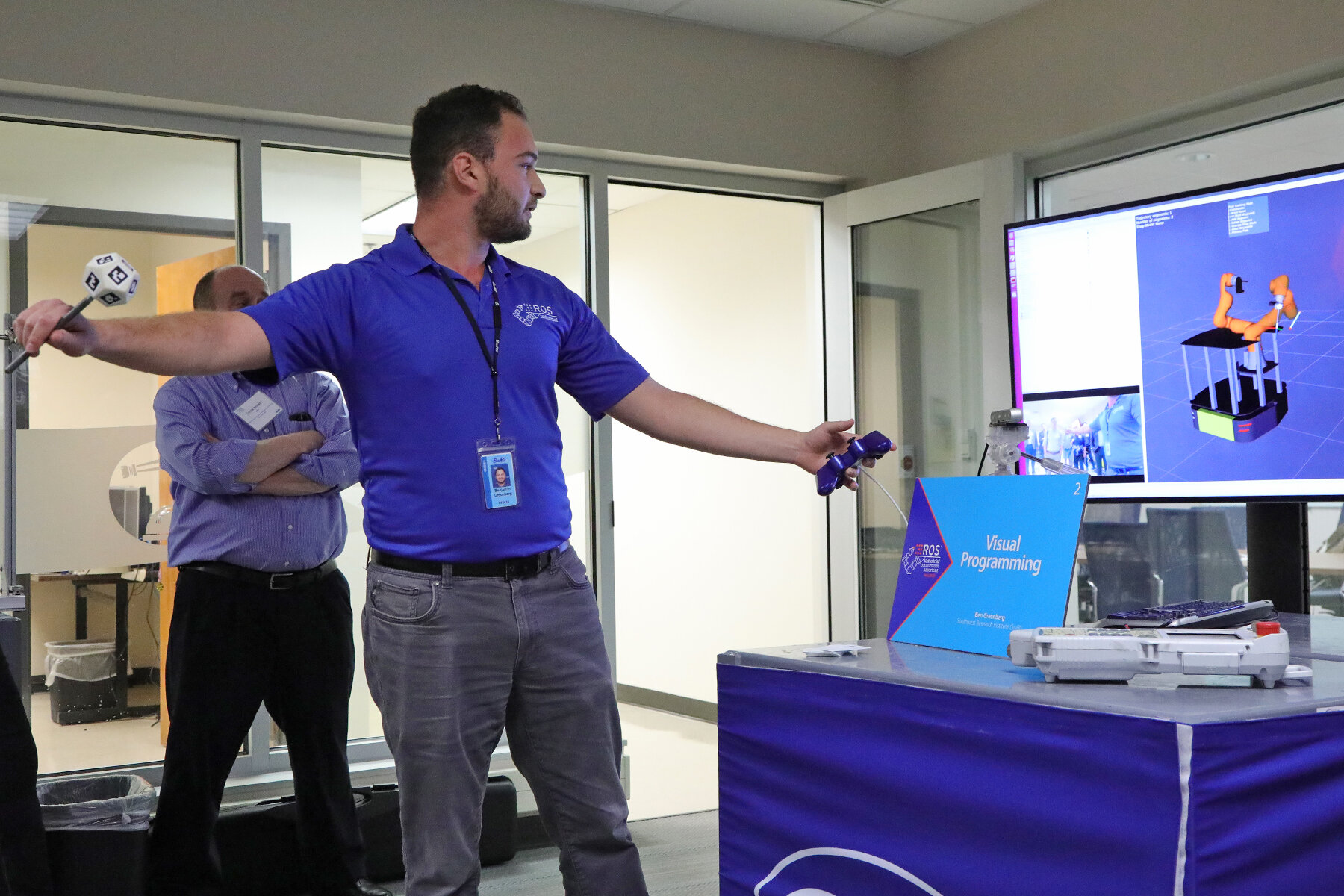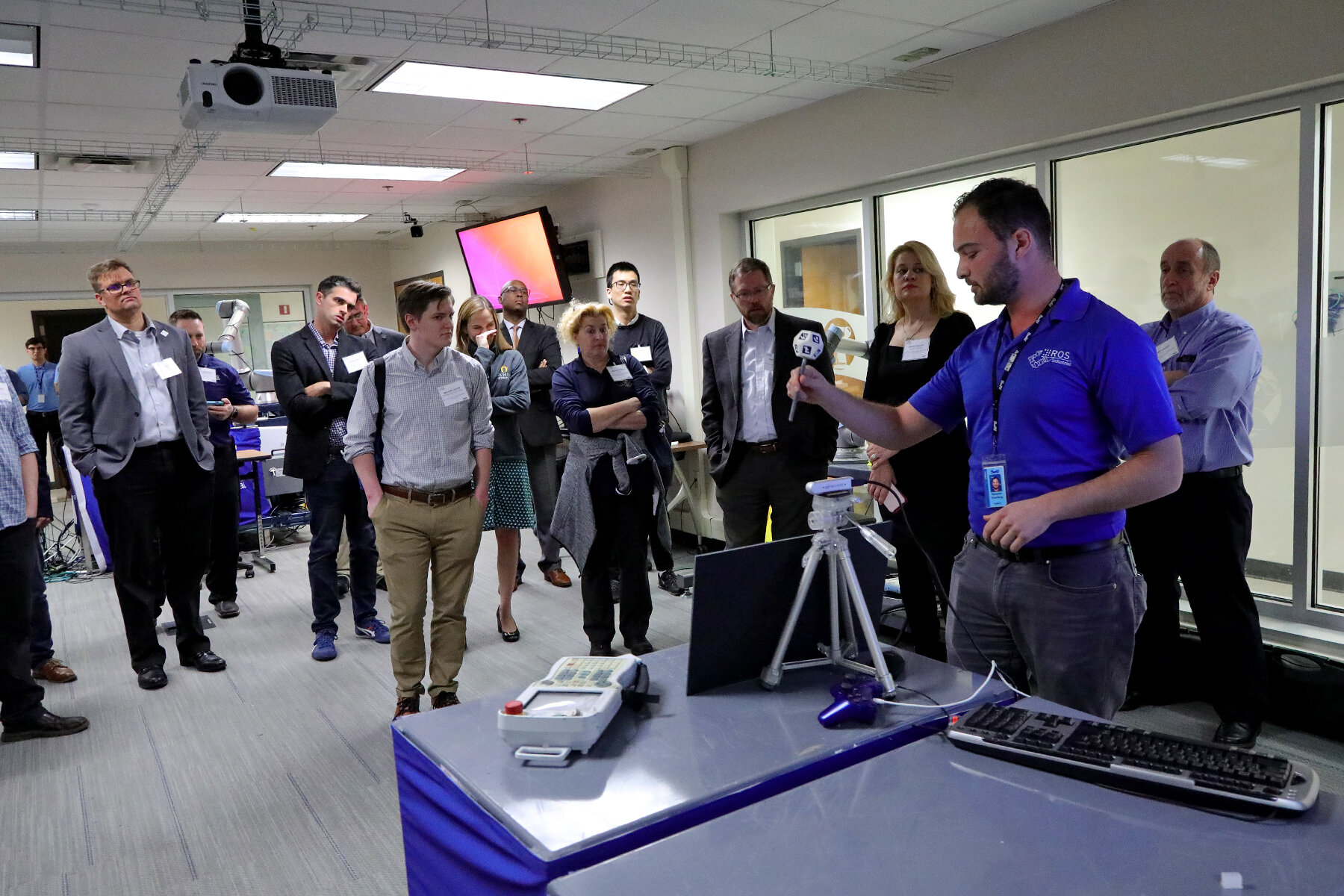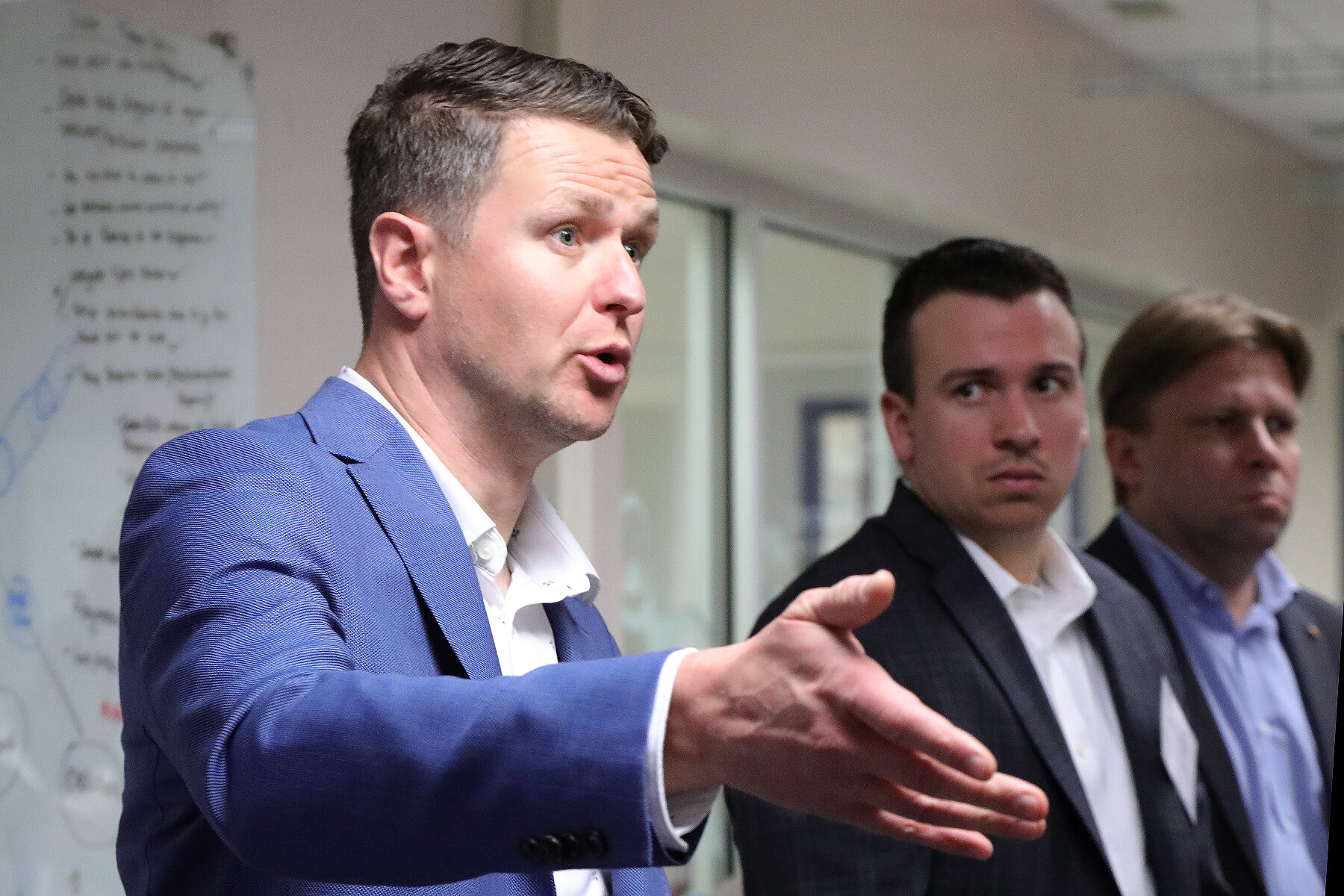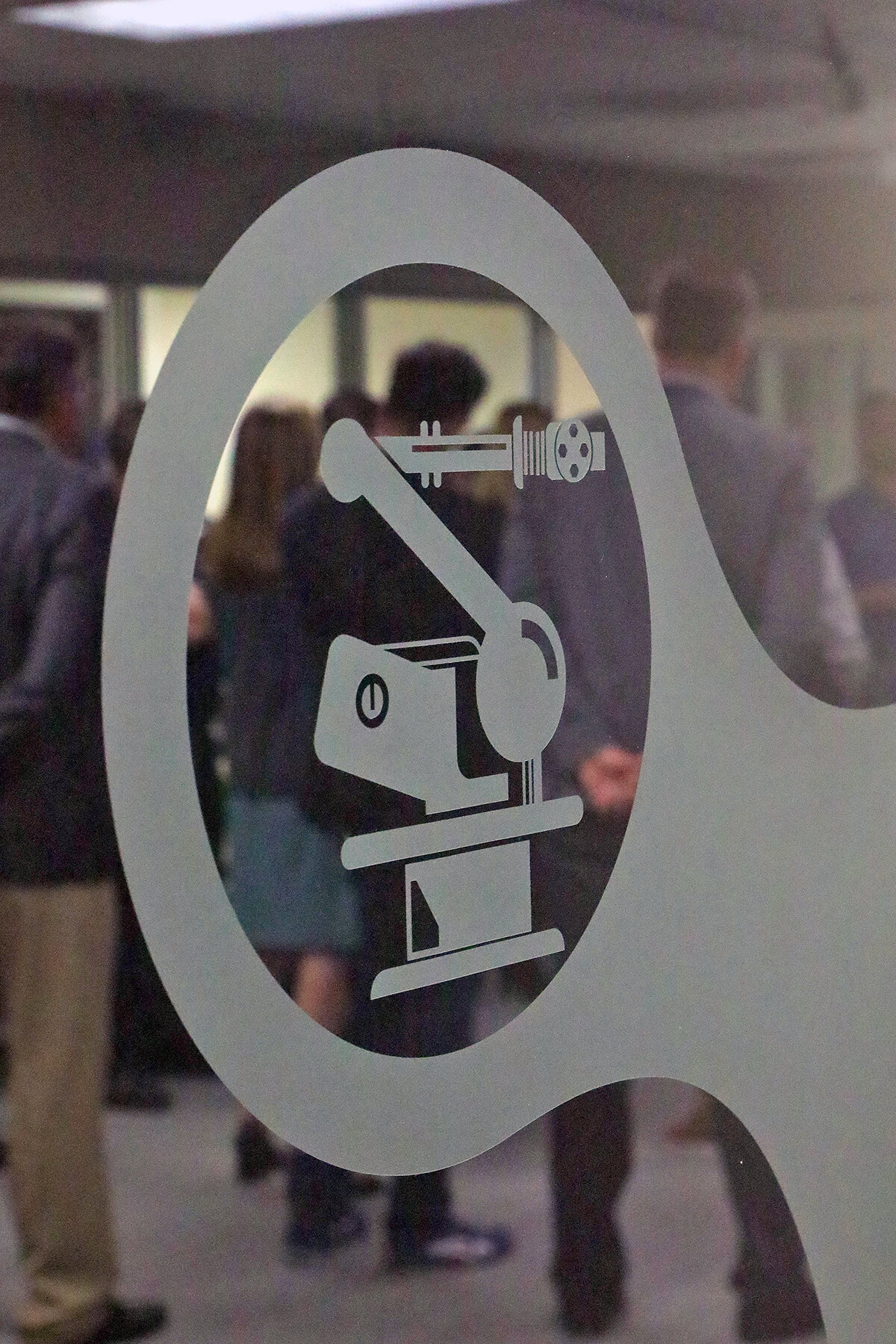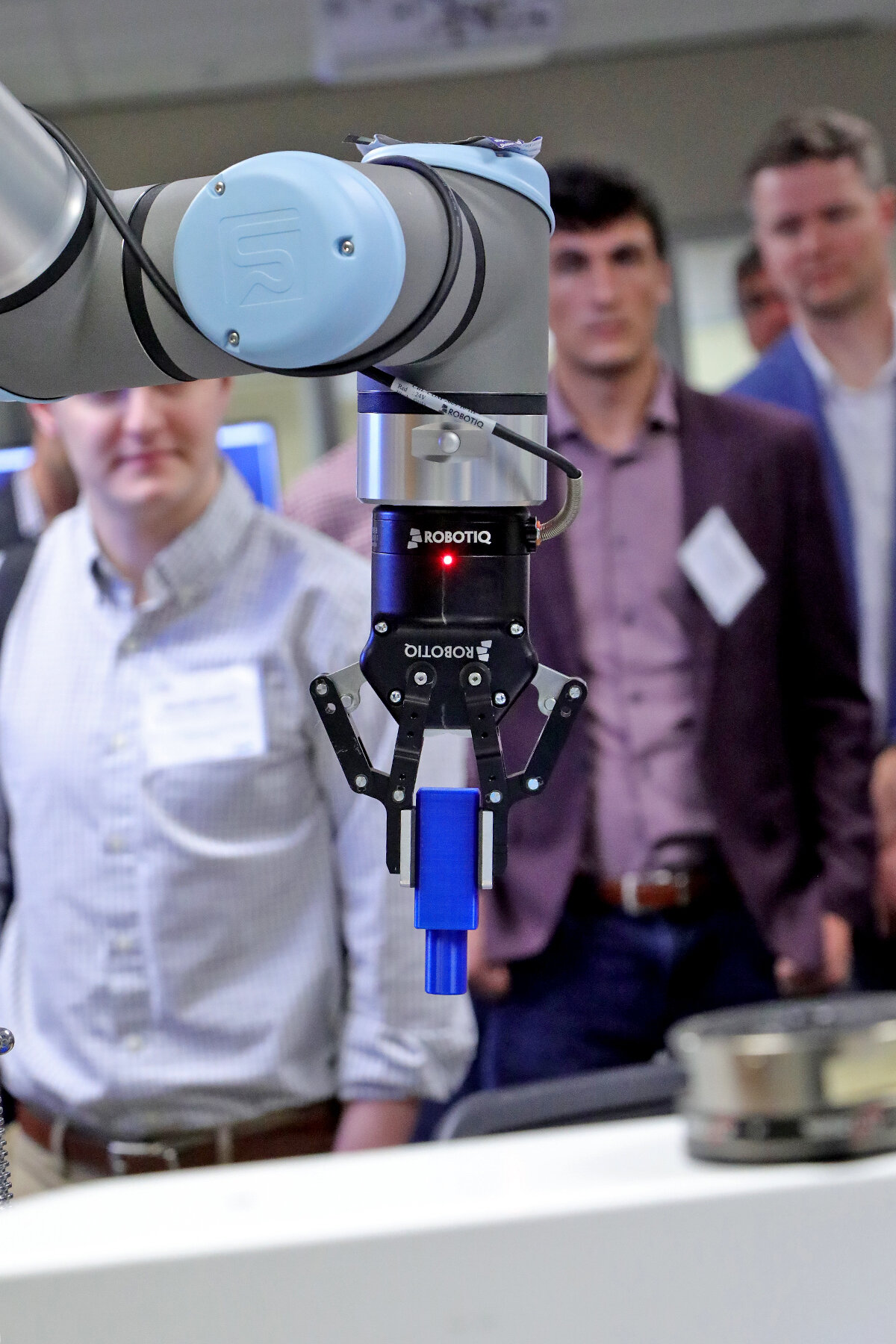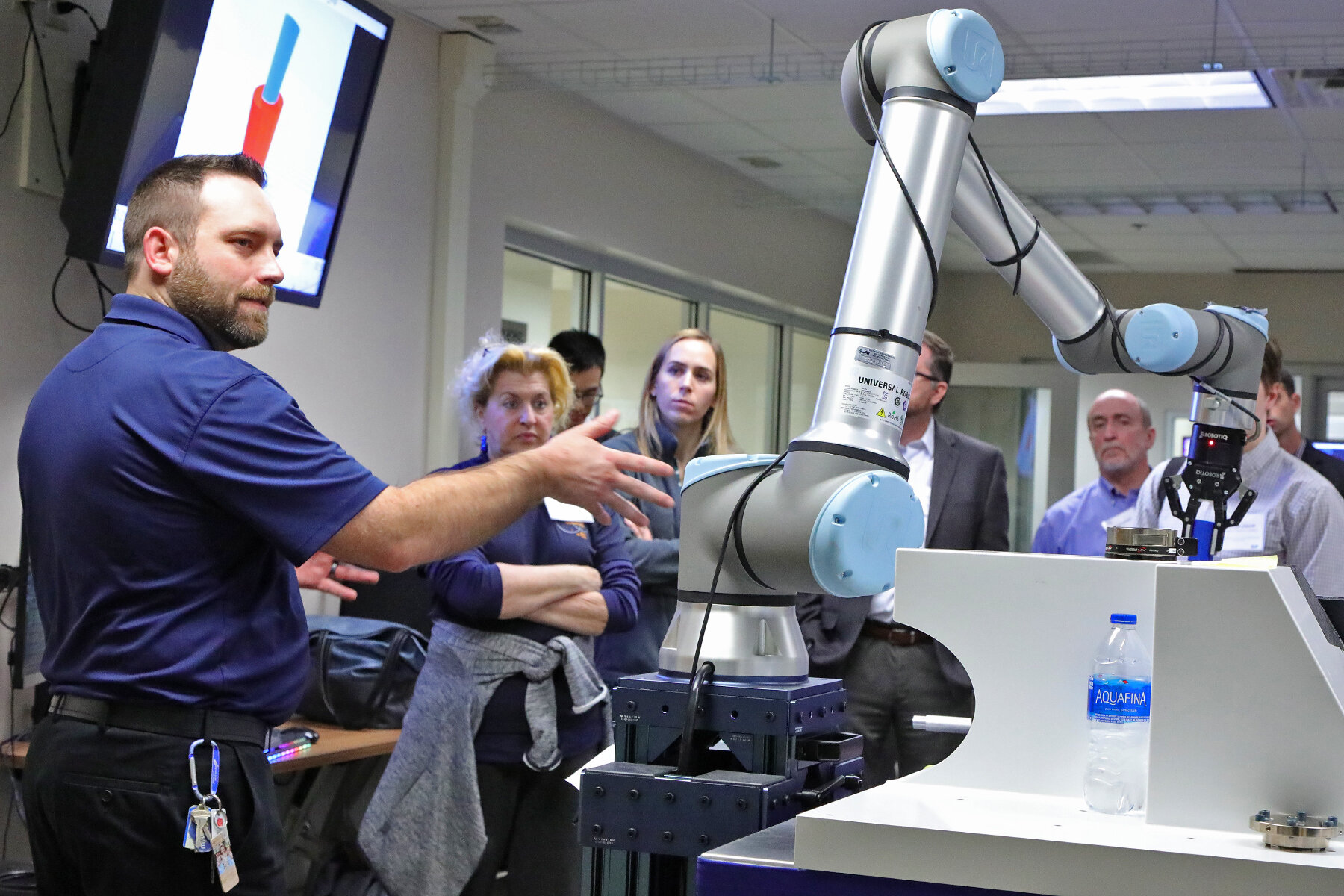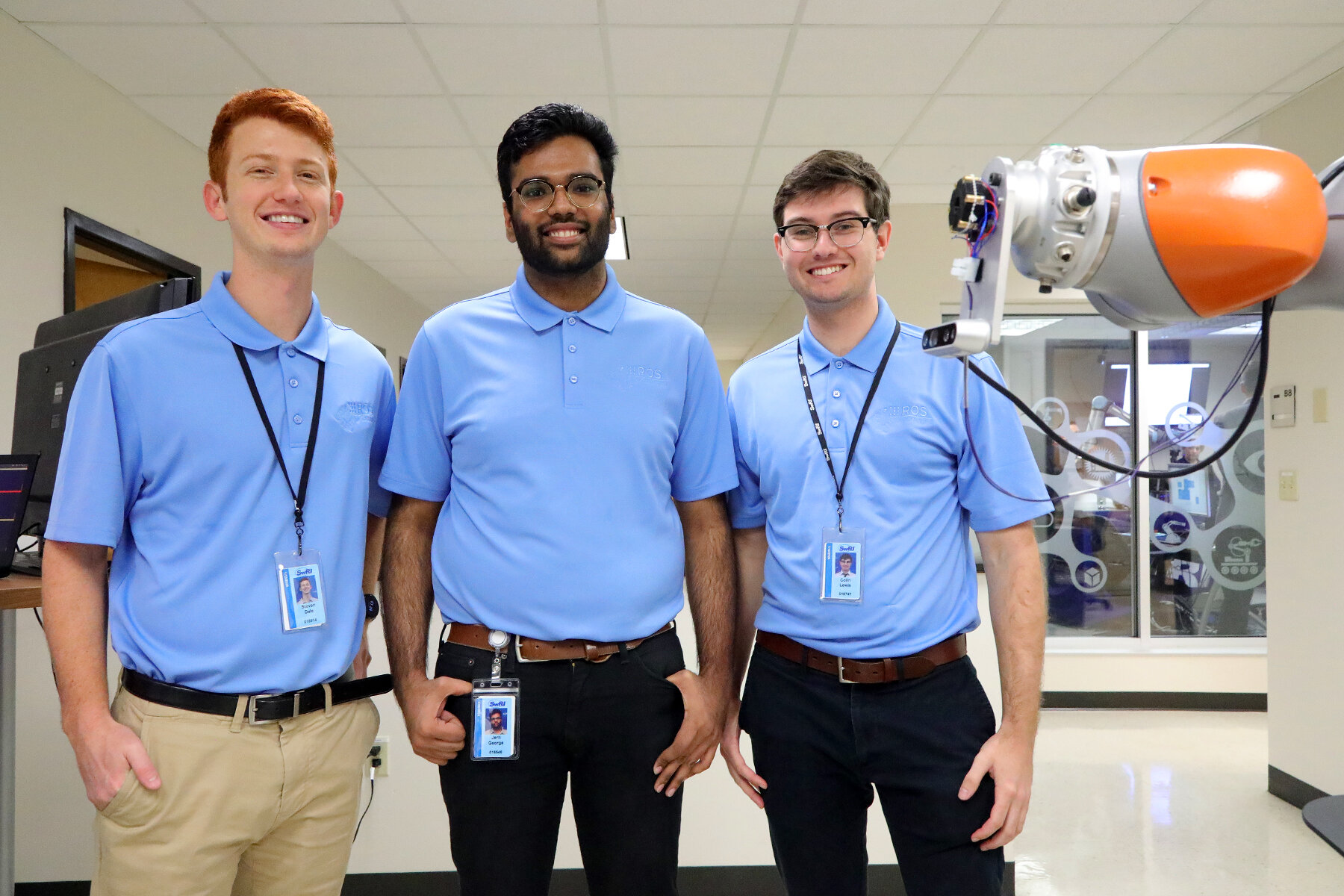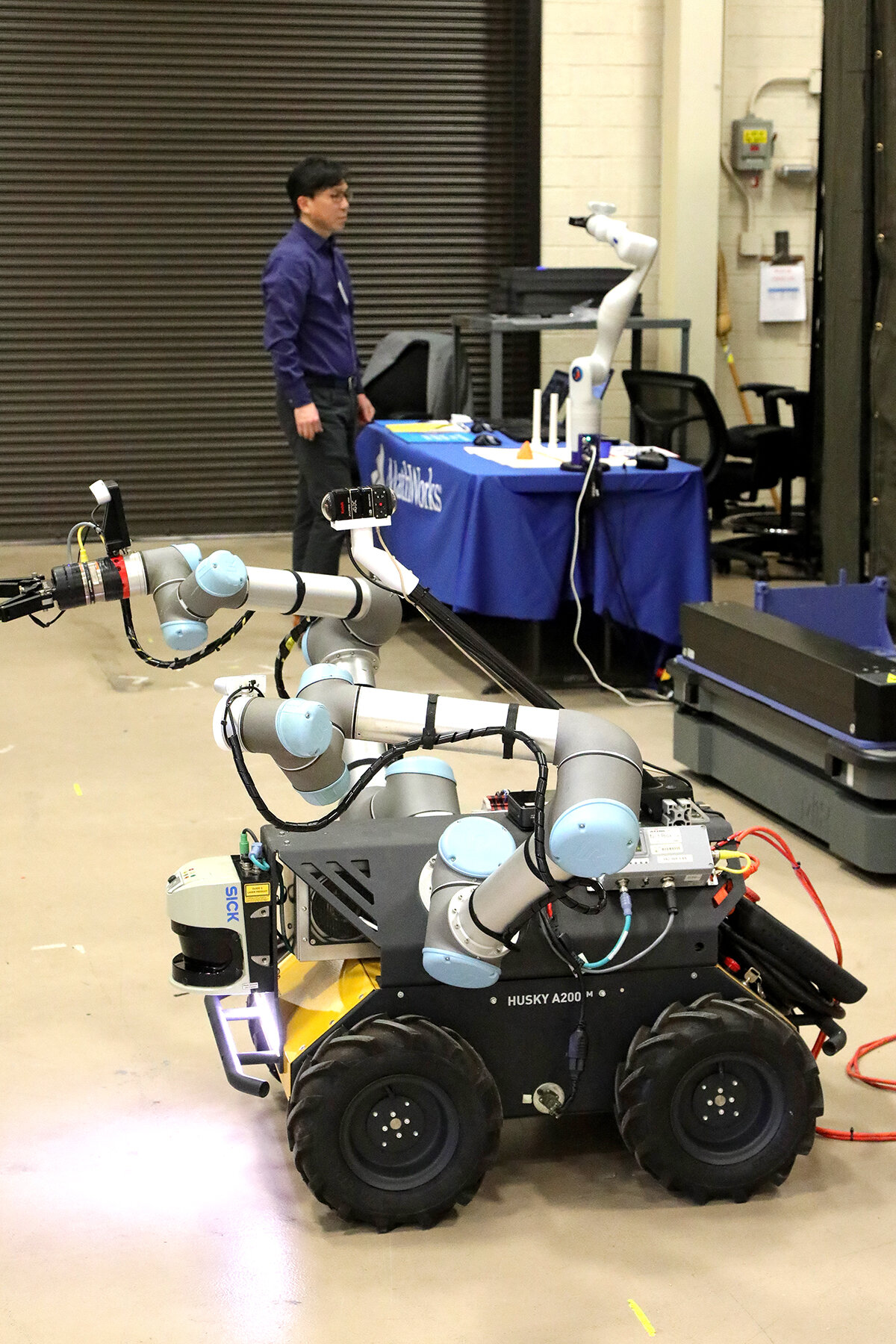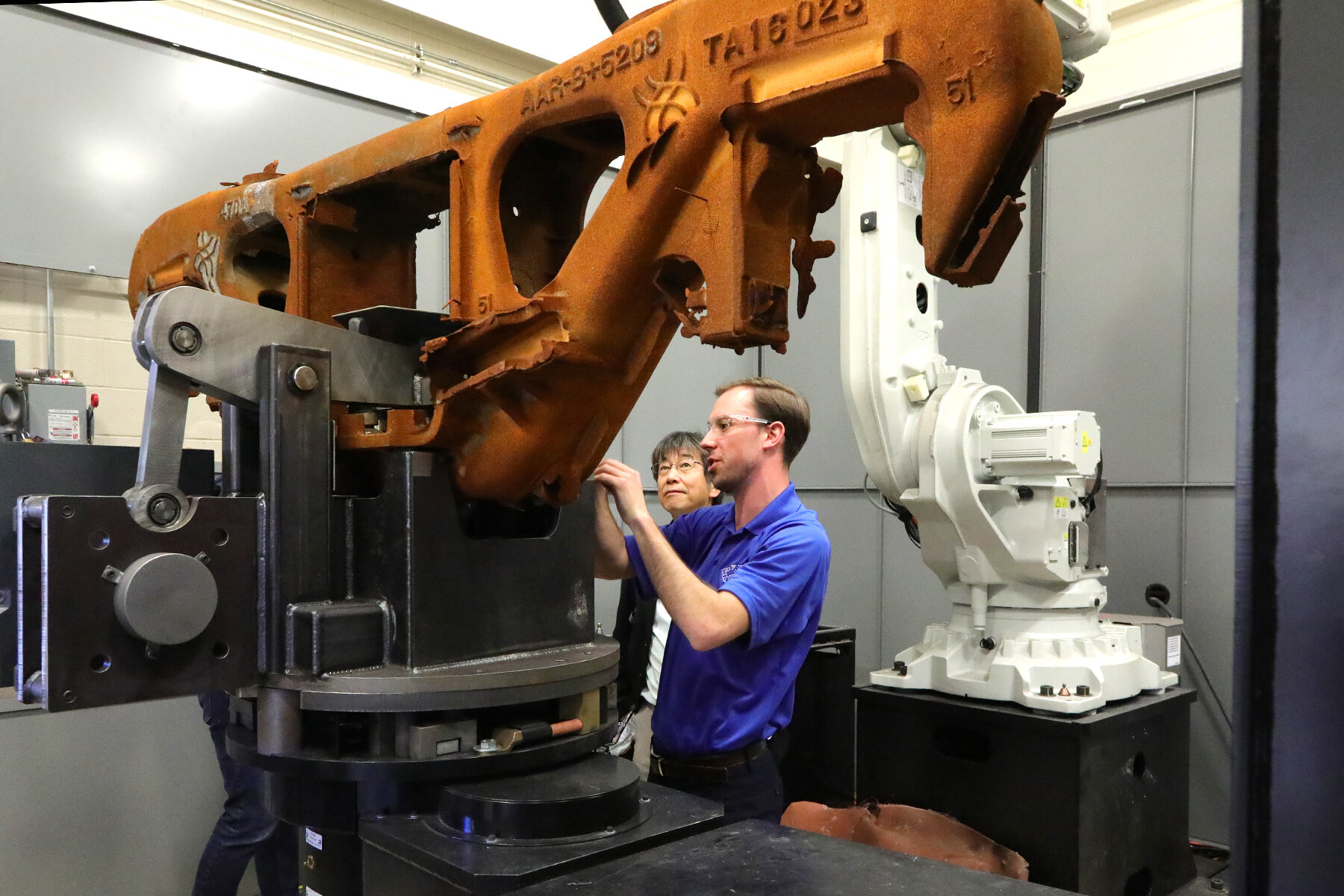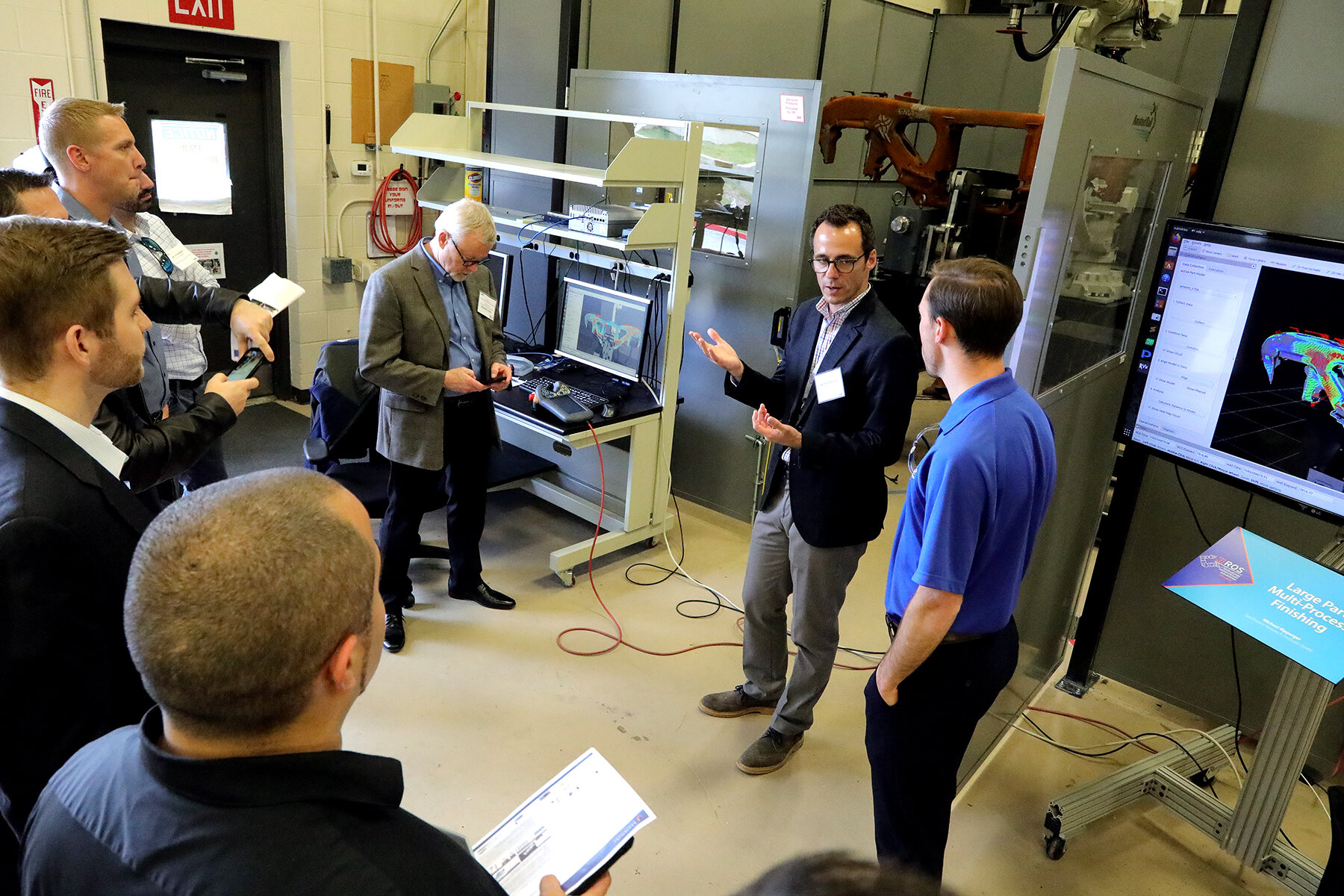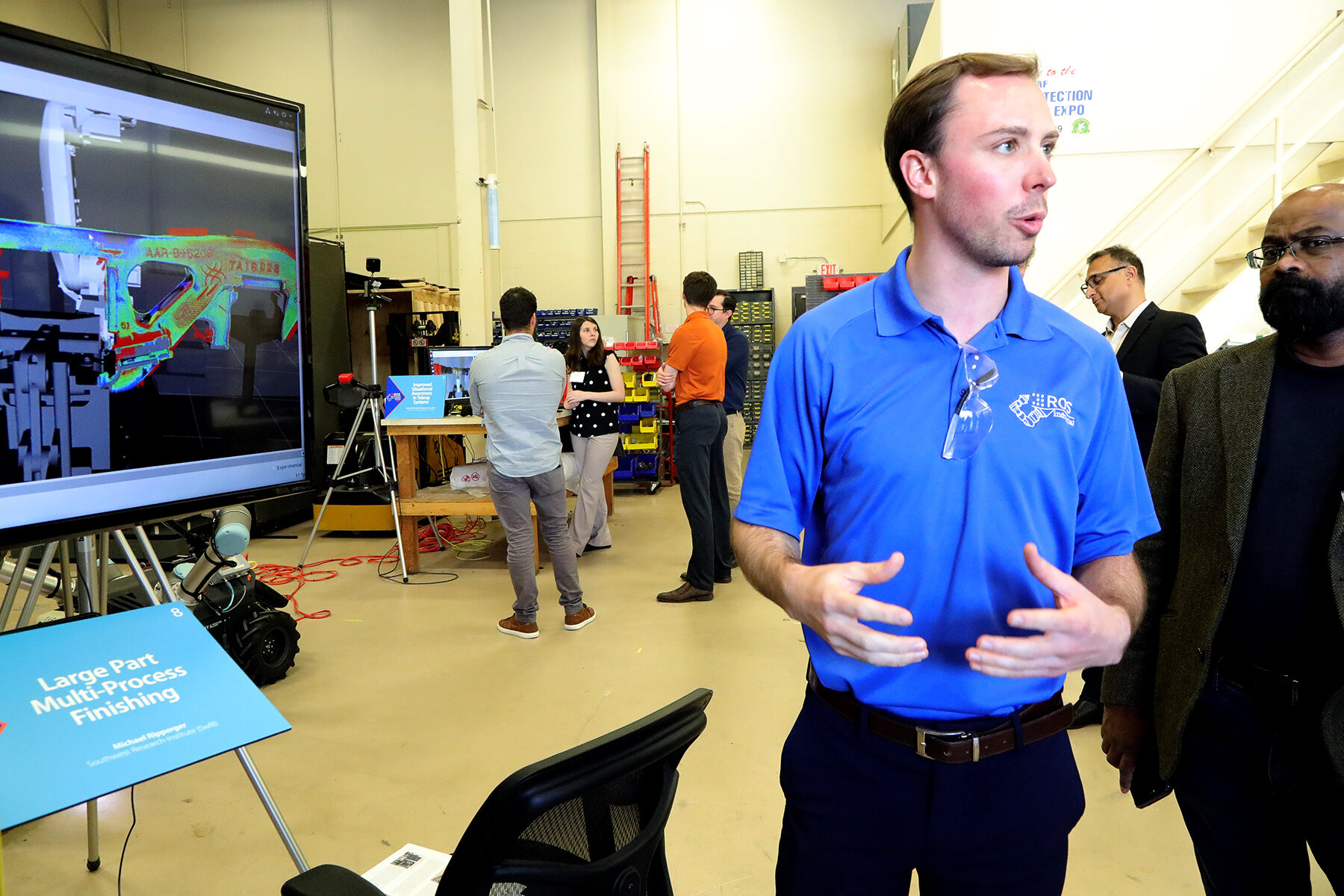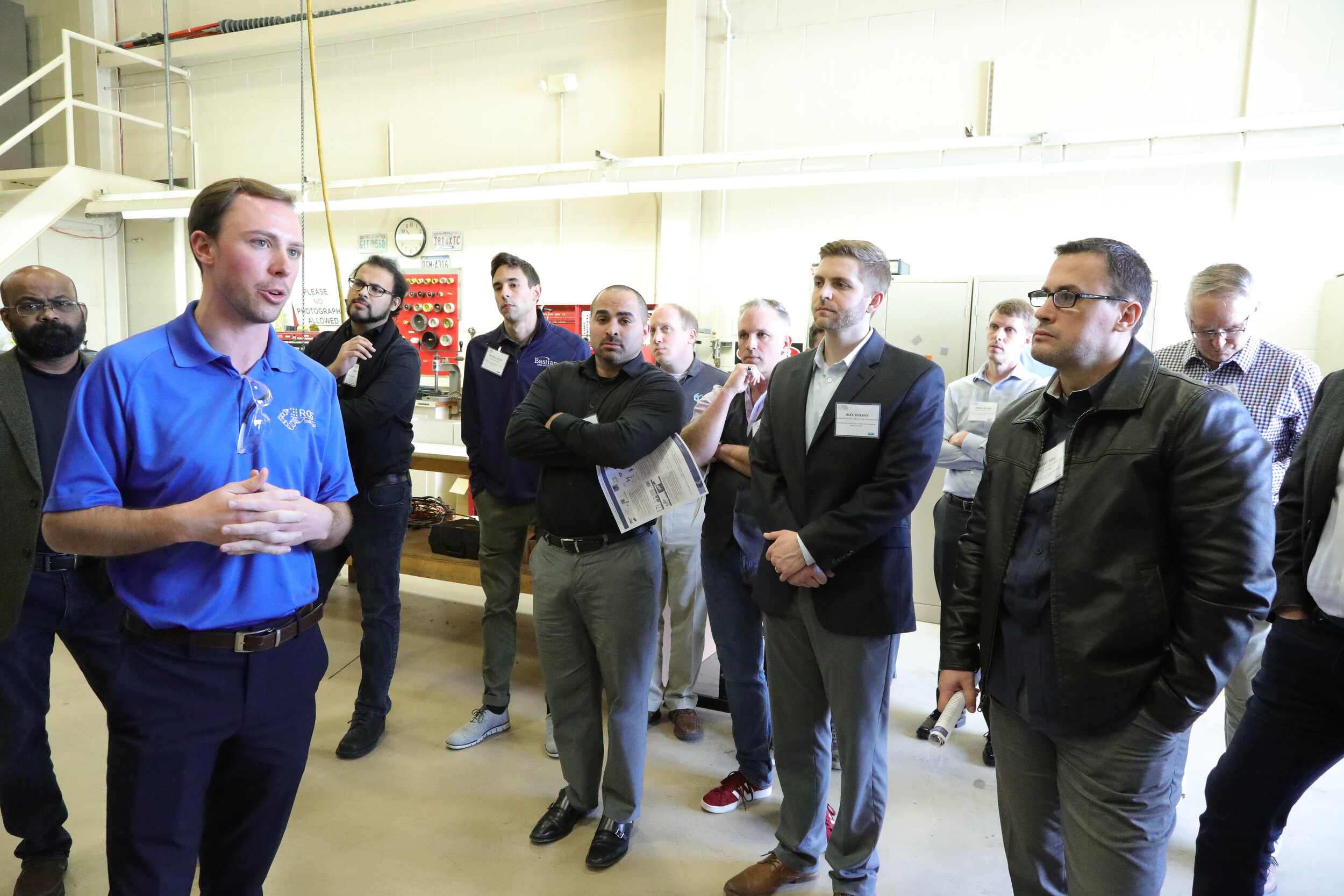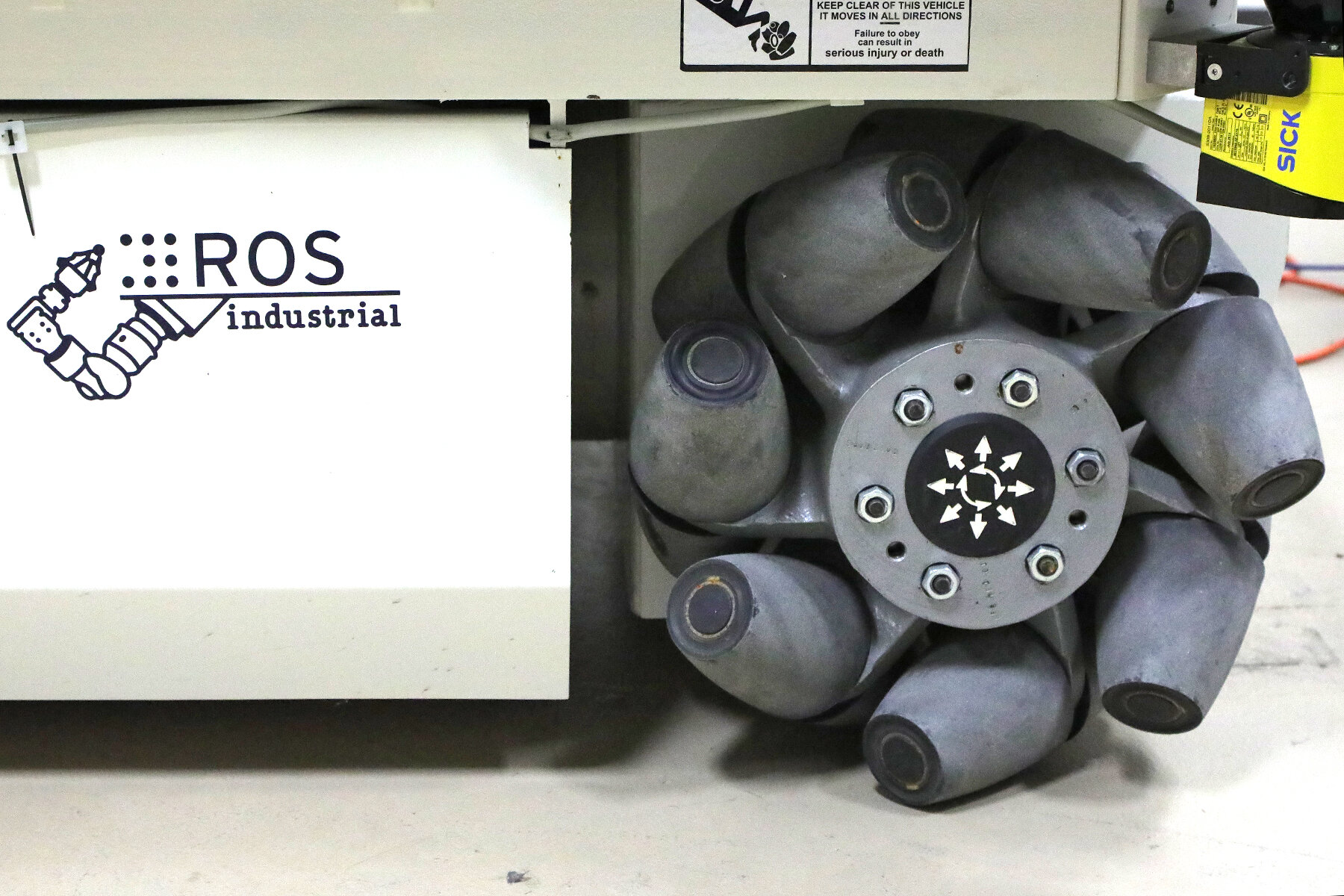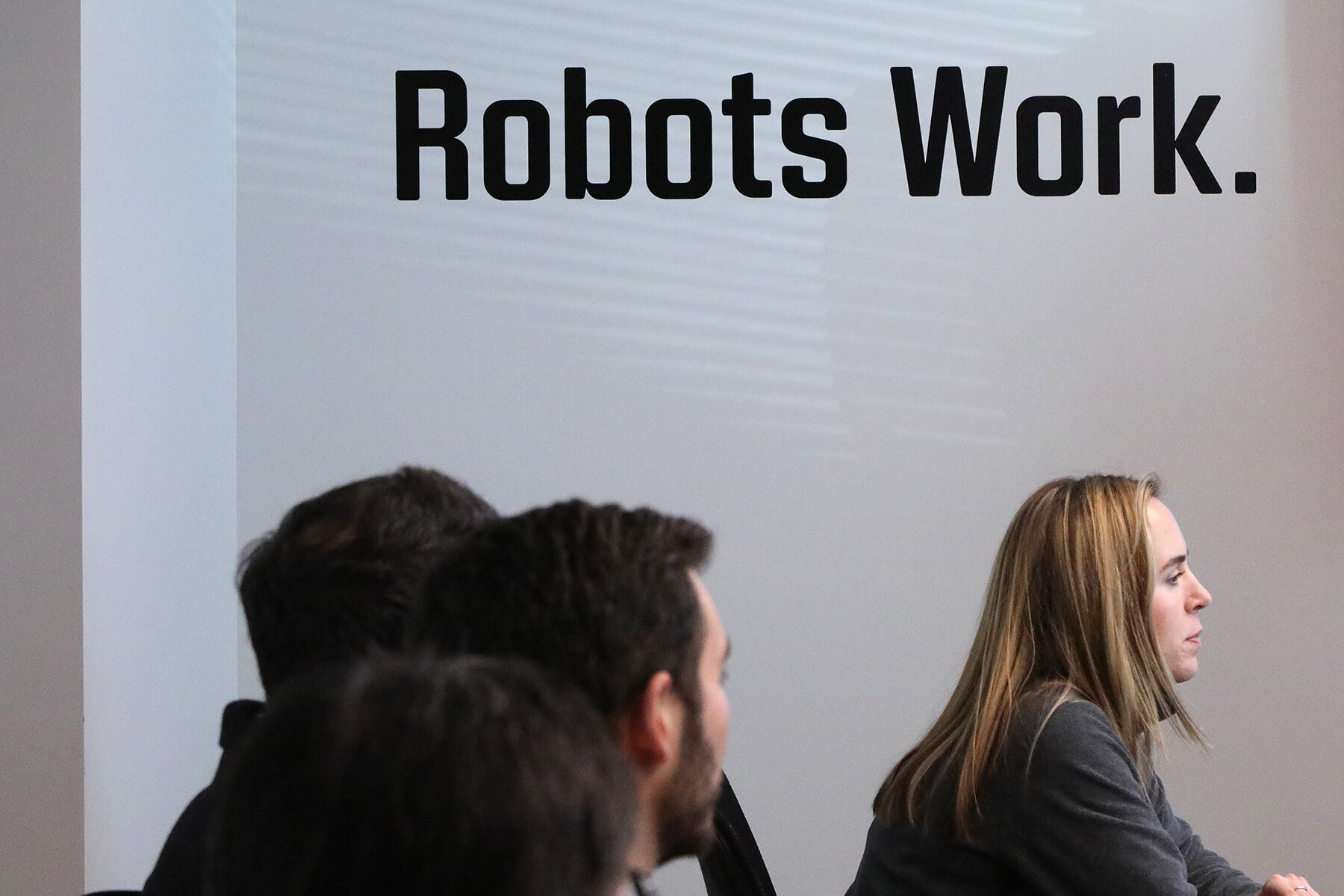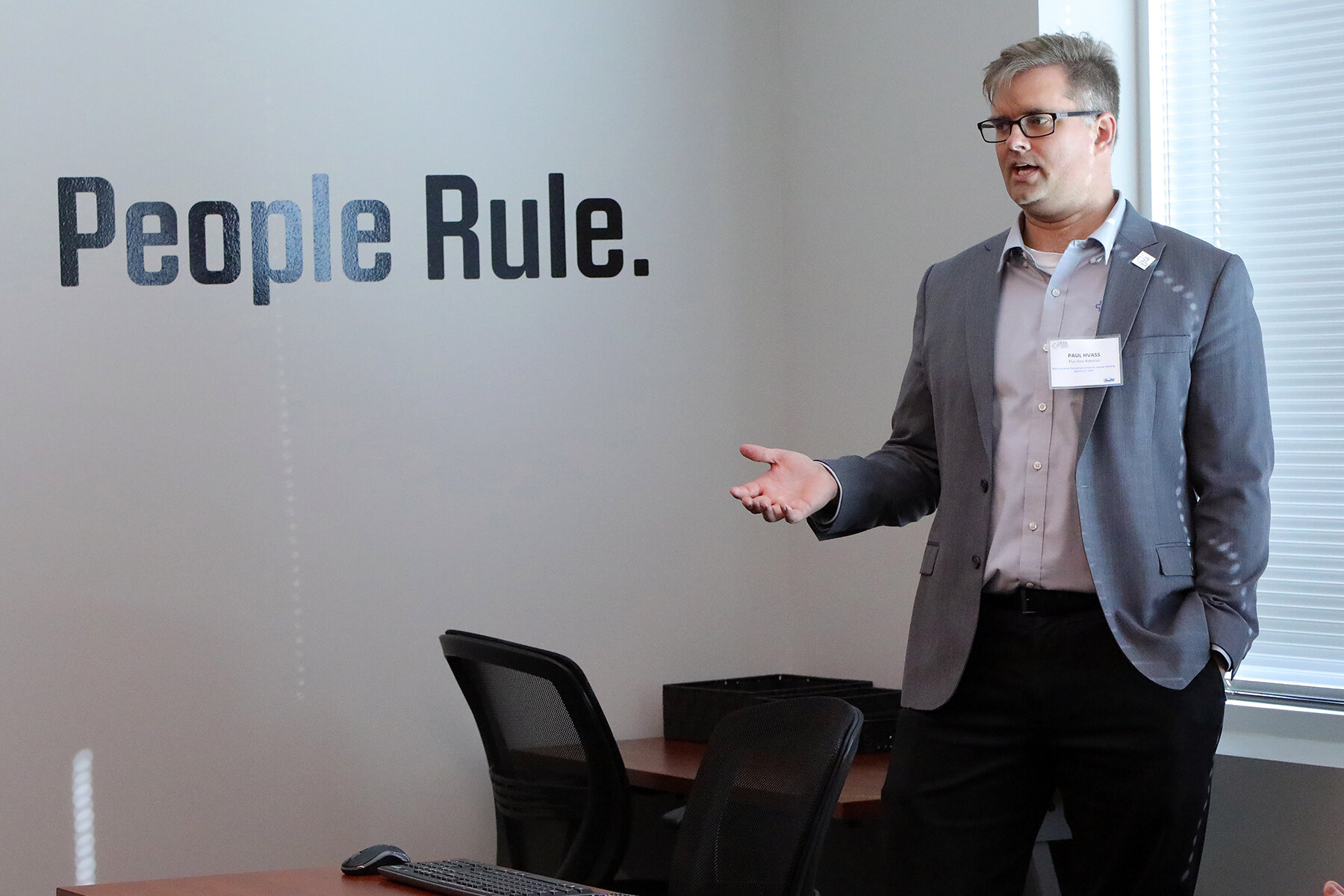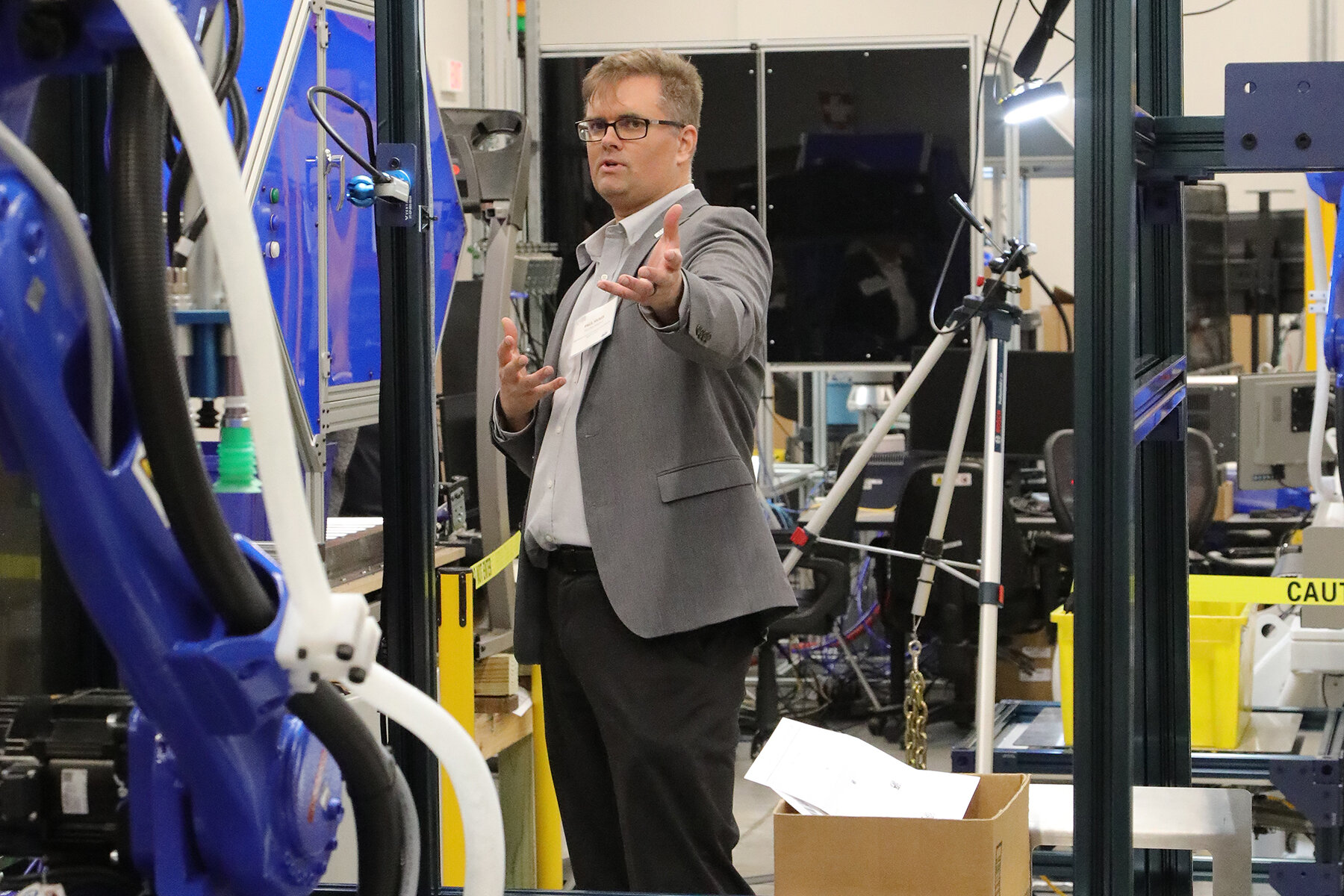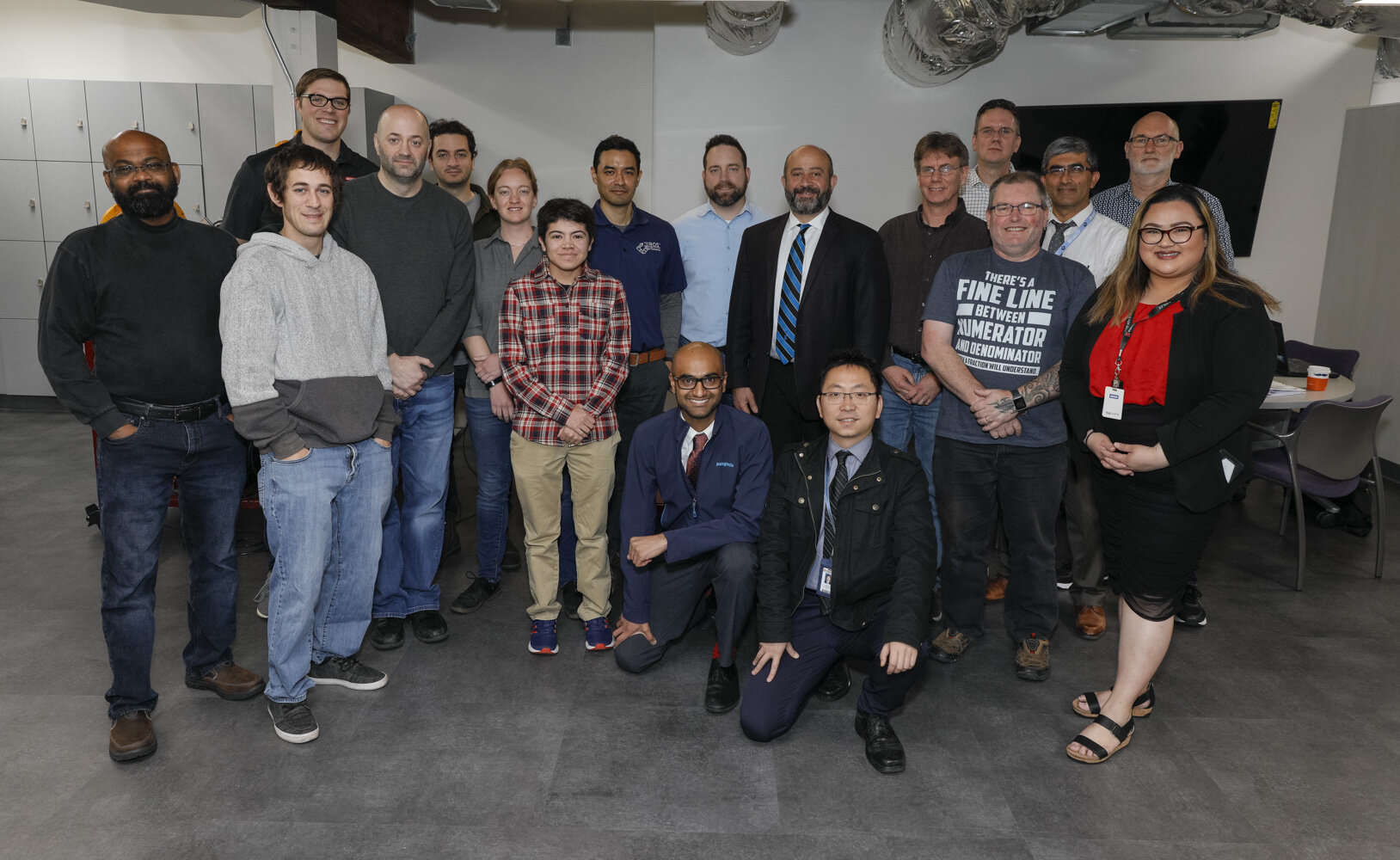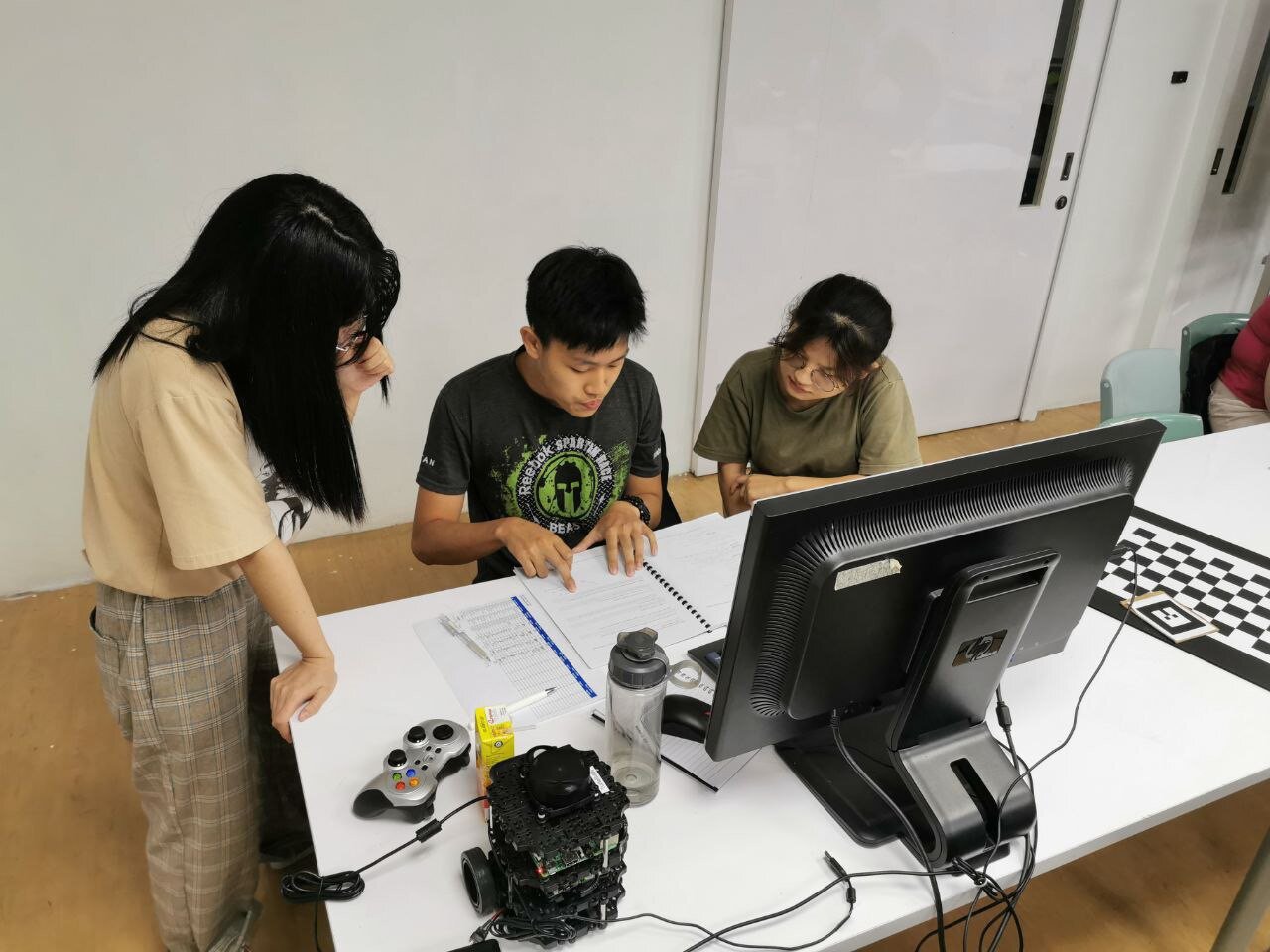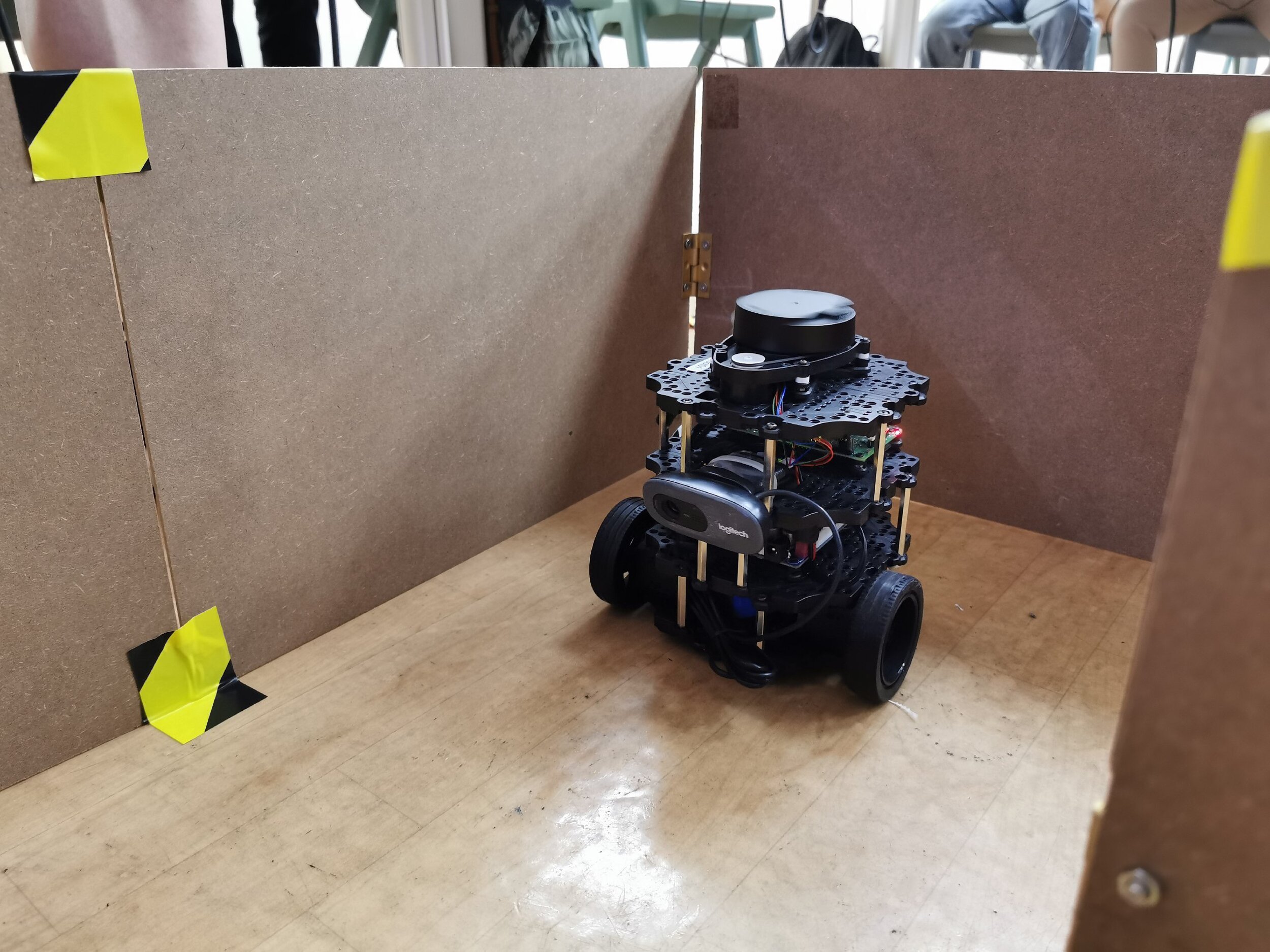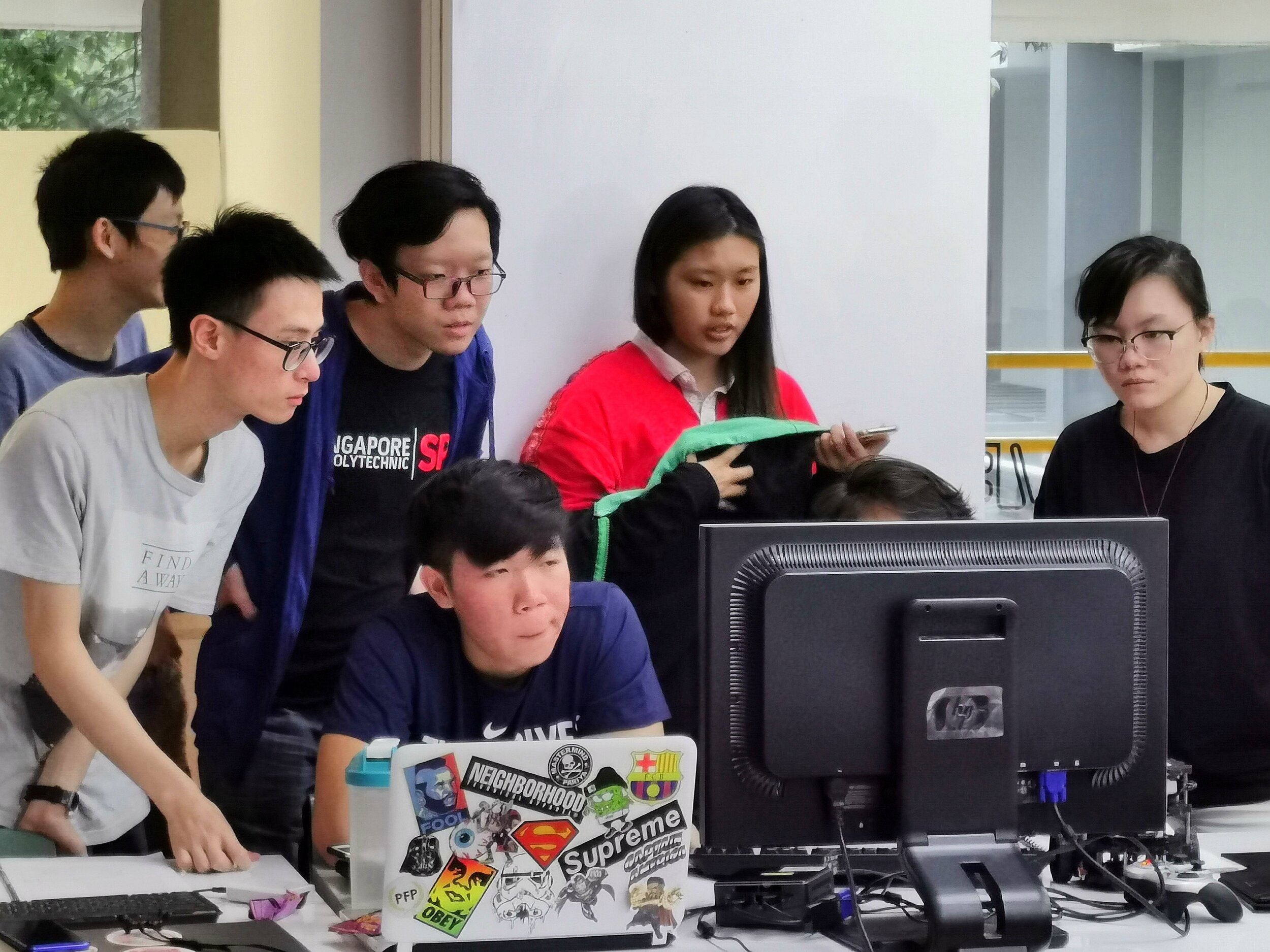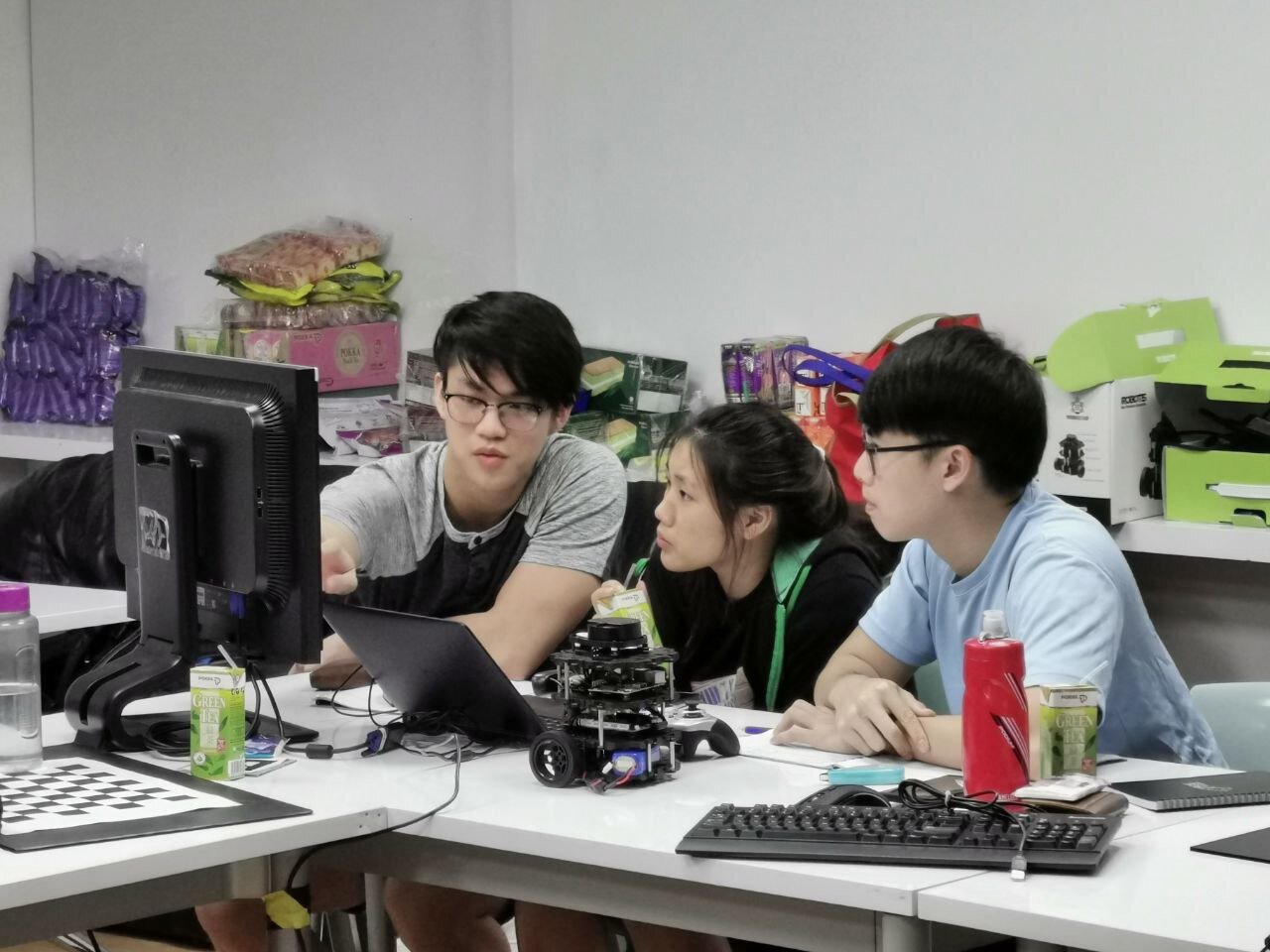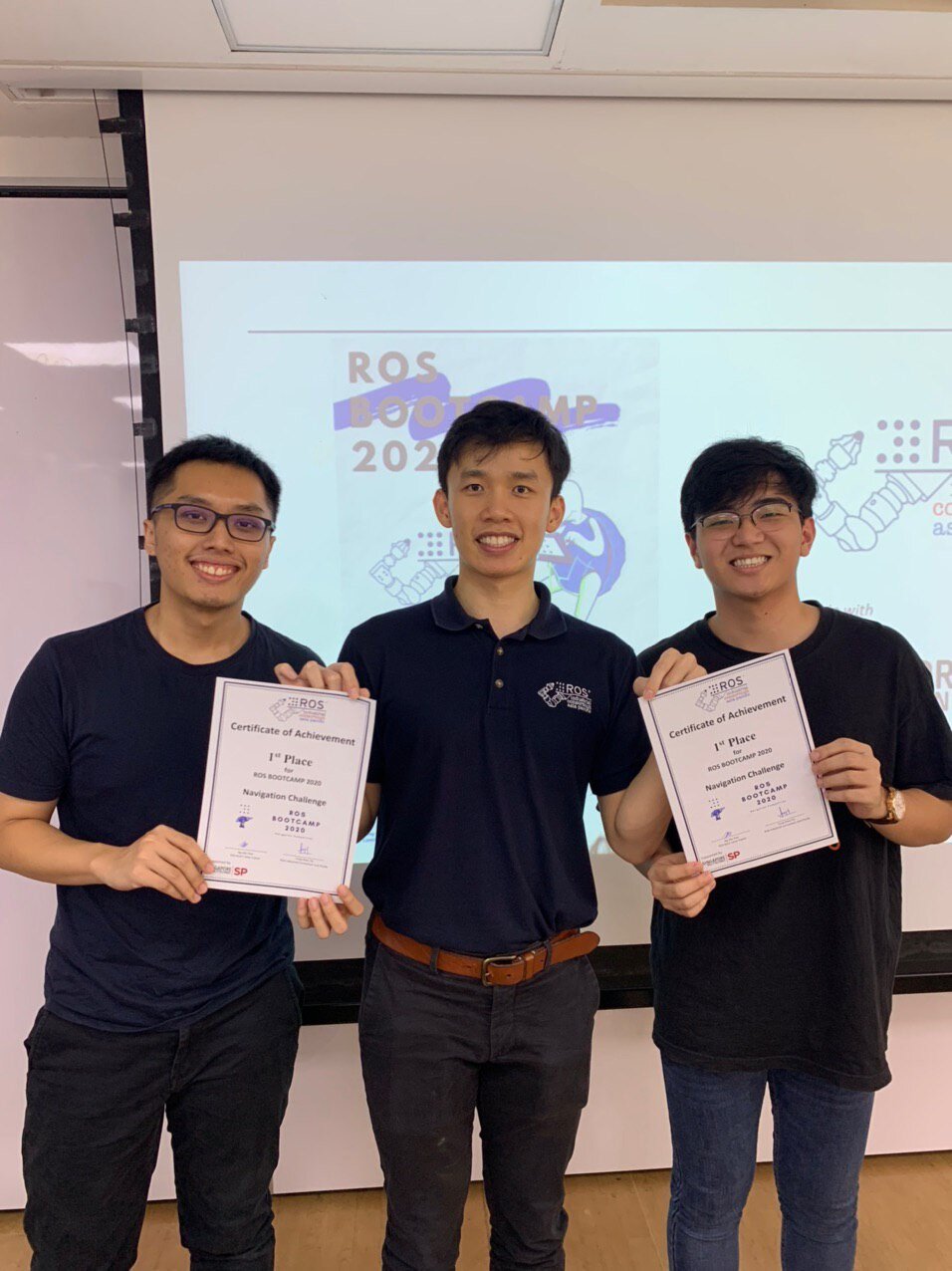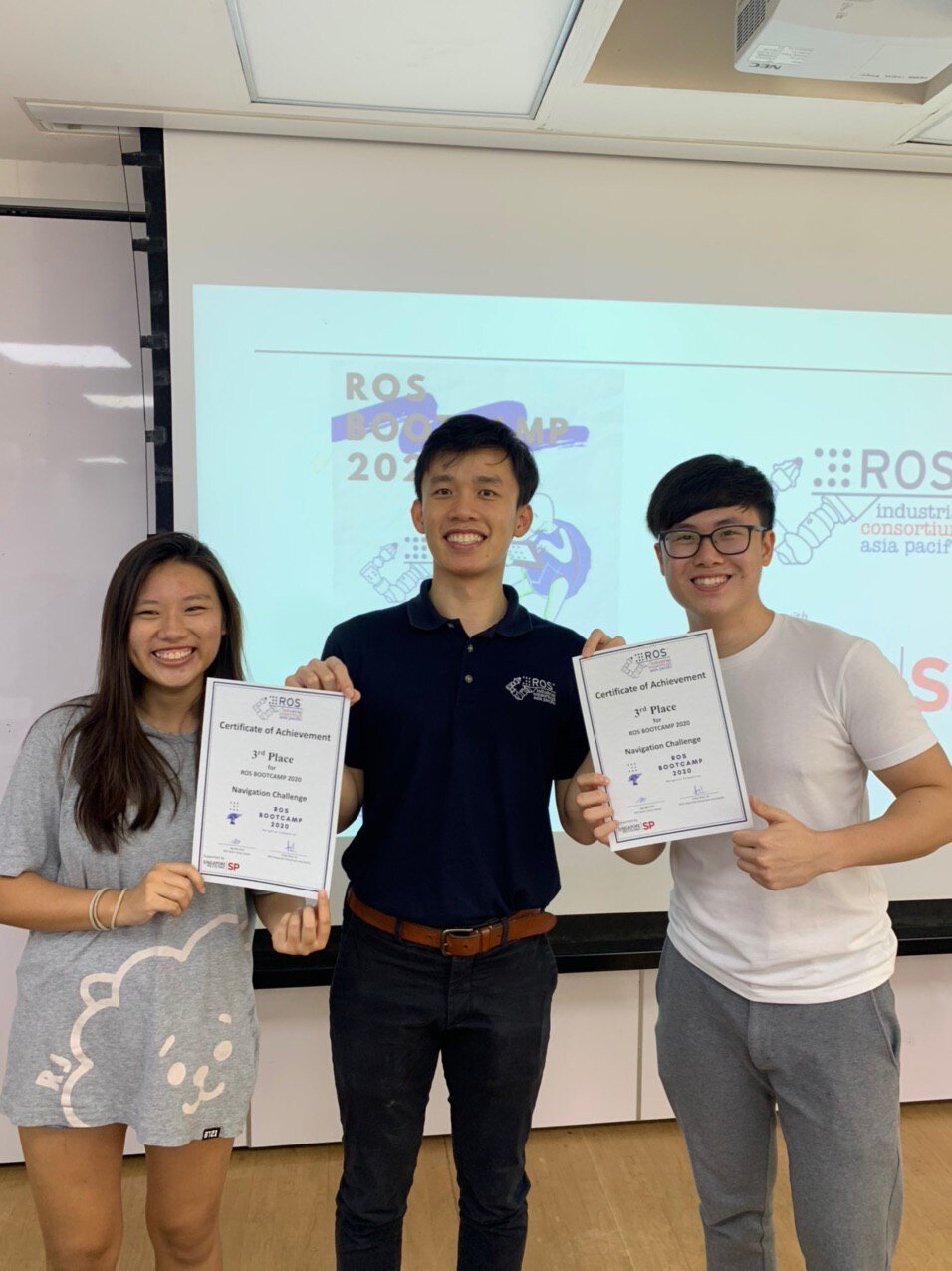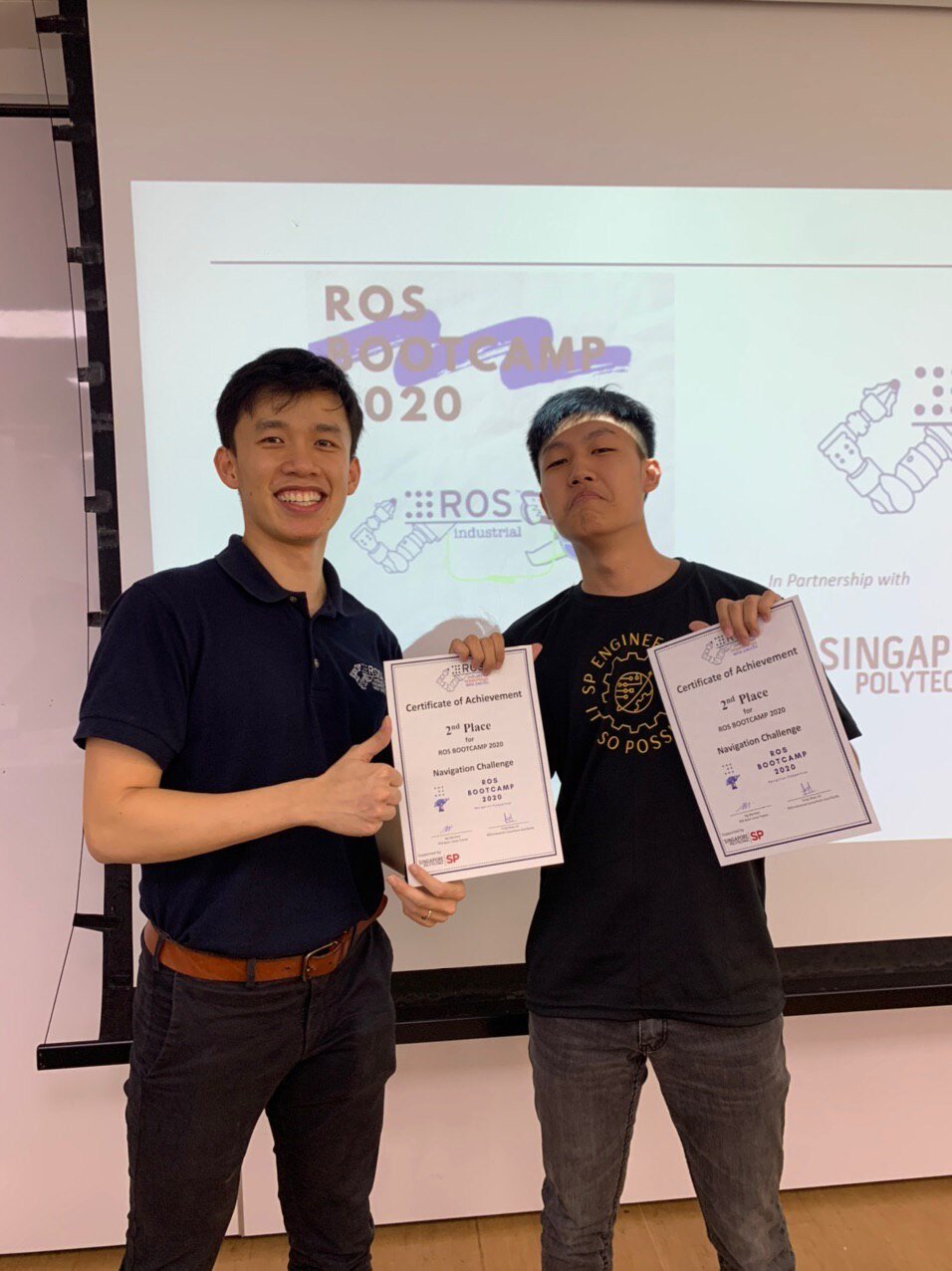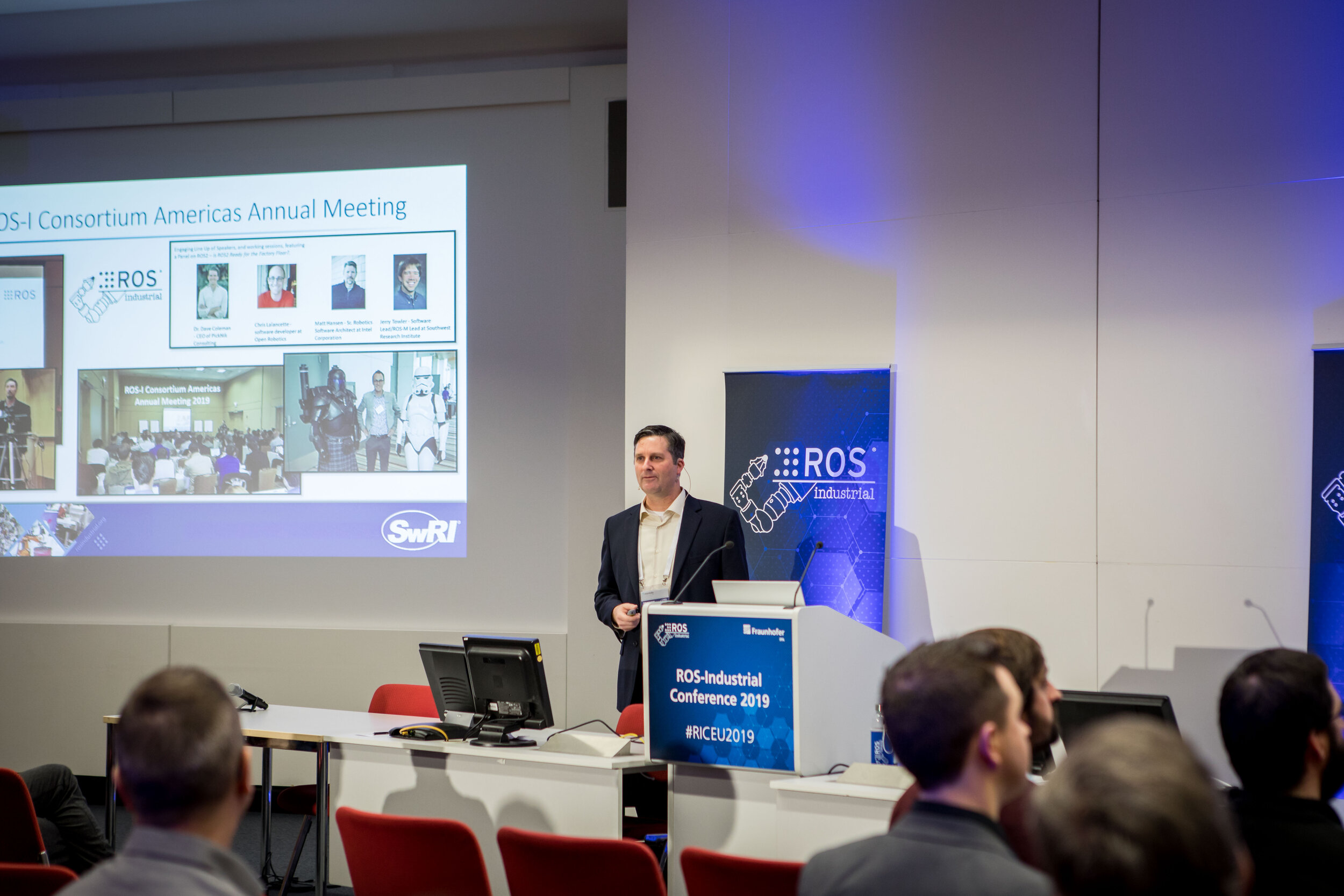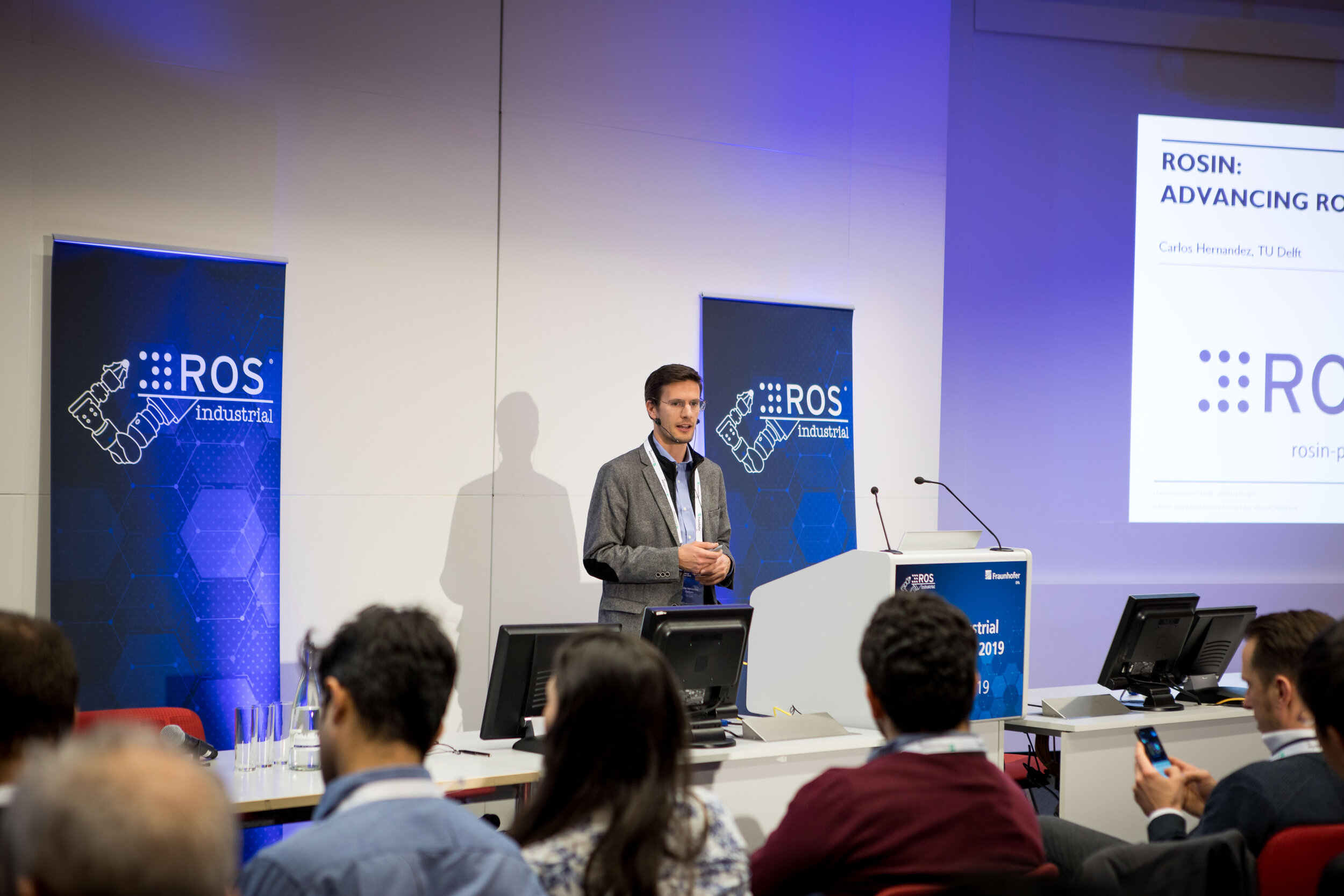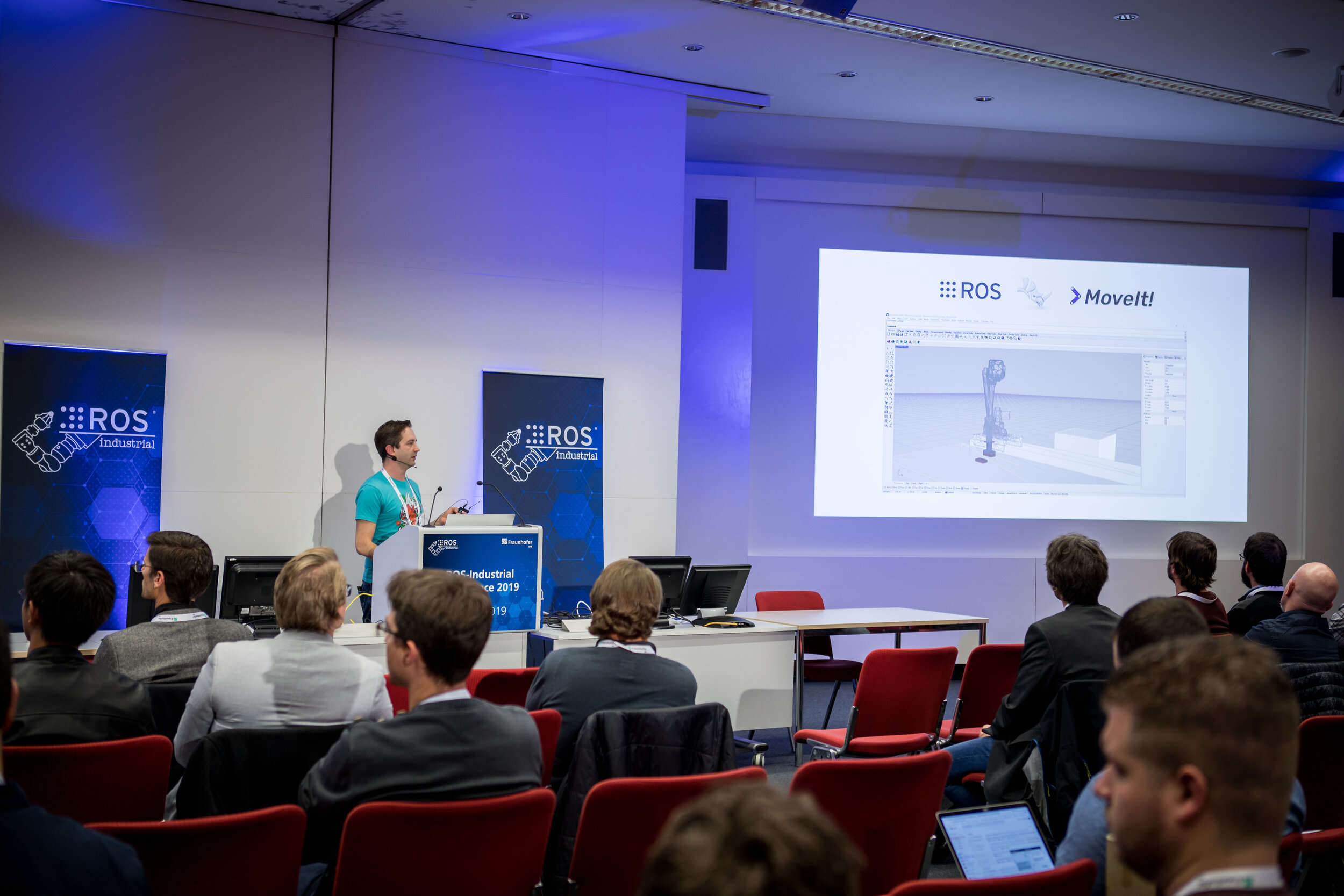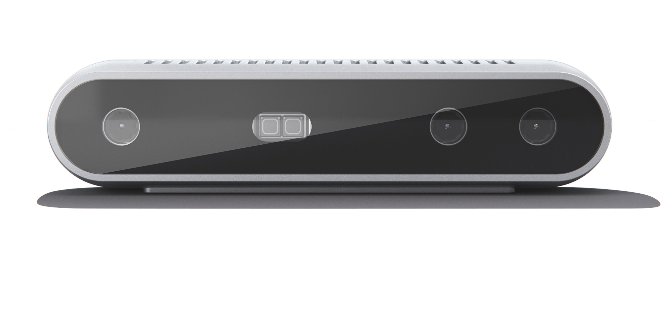From here, Dave Coleman of PickNik shared recent developments around MoveIt2, including capabilities around real-time path planning. Open Robotics Developer Advocate Katherine Scott then shared developments and opportunities to collaborate around ROS2 and the curation of the ROS ecosystem.
The keynote for the member day of the annual meeting featured Greg Balandran, R&T Engineered Factory Automation Manager ad Spirit AeroSystems, who discussed ROS-I’s Influence on Automation Strategy. Greg shared challenges that his organization has faced and how leveraging ROS and working within ROS-I helped accelerate their automation development and roadmap execution.
The day two afternoon kicked off with a workshop where members broke into groups to discuss elements of the vision for ROS-I, needs, and the areas where membership can focus for advancement. The key takeaways from this workshop were:
- There is a huge desire for richer industrial-centric training and education resources, beyond the current instructor-led model. These could include cloud-based exercises of the current topics, as well as new topics such as navigation for industrial-centric applications.
- There was a great discussion around additional vehicles to drive investment into ROS-I and the capabilities to accelerate the capabilities of interest. This included collaboration with other organizations that fund mid-TRL research as well as other funding vehicles that foster small business engagement/participation.
- Numerous topics focused on moving ROS-I into a product or something tangible that an end-user can develop an application with tools they have existing familiarity with, such as CAD environments and the physics tools that they currently leverage.
- Detailed listing of capabilities that are desired to enable member applications that include real-time process planning, high-res SLAM, dynamic models, error handling and recover at the system level, and many others.
This feedback enables the Consortium to update and prioritize collaborations, training topics, project topics that are put forward and more to ensure the focus is appropriate relative to the needs of the membership and the broader ROS-Industrial community.
The remainder of the day focused on member presentations that shared recent developments and contributions. Lou Amadio of Microsoft kicked it off with a presentation on recent developments relative to ROS and Windows, Azure, and Visual Studio. Arnie Kravitz, CTO of the ARM Institute, discussed how ROS and ROS-I play a key role in the ARM Institute’s vision in fostering advanced robot capability from the research domain, to be ready for production.
YJ Lim, Sr. Technical Product Manager of MathWorks, shared what the latest developments by MathWorks have meant for developing functional safety in ROS-enabled systems. NOV’s Justin Kinney, Technical Manager Robotics and Mechatronics, shared the end-user ROS journey, from “What is a ROS” to their own functional full-scale demonstration on a test bed, a powerful story that lays out what is possible by leveraging the resources available in the community and working with the other members to further your vision.
Wrapping up the day, John Wen of Rensselaer Polytechnic Institute, and John Wason of Wason Technologies, shared their collaborative ARM Institute project, on Robot Raconteur, which is a middleware that enables easy integration of numerous types of hardware components, which now has interoperability with ROS, and how they are seeking to progress the work to enable richer industrial applications. Eugen Solowjow, Research Scientist at Siemens Corporate Technology, shared recent developments by Siemens that further the tighter connection between industry standard technology, that has the safety and reliability that is expected, but offers both interoperability with ROS-enabled components, as well as the latest AI on the edge capability that is currently emerging for advanced capabilities.
Moving Forward
It was a full two days, and though there remains uncertainty relative to how many in person or physical development we can do, the benefit of collaborative software development, and as evidenced in all the activity in the open source community, though physical testing and developments may have slowed, show there is a lot of work that can be done, even during a challenging time. We hope that those who attended, both in person or remote, also feel as motivated to see how we can further ROS-I into the project and product that we feel it can be. We look forward to stepping up to the challenges put forth by our membership and partners, and hope you also look forward to joining in that journey.



